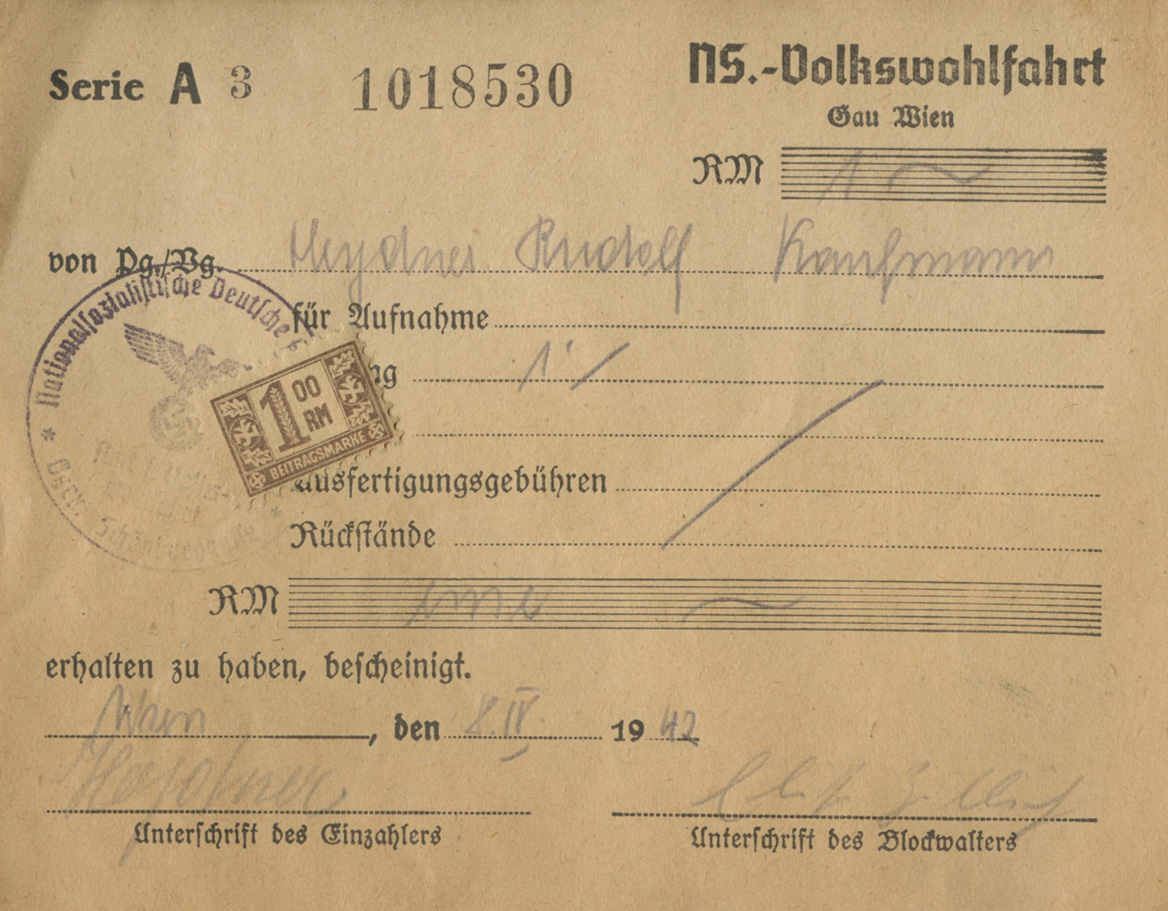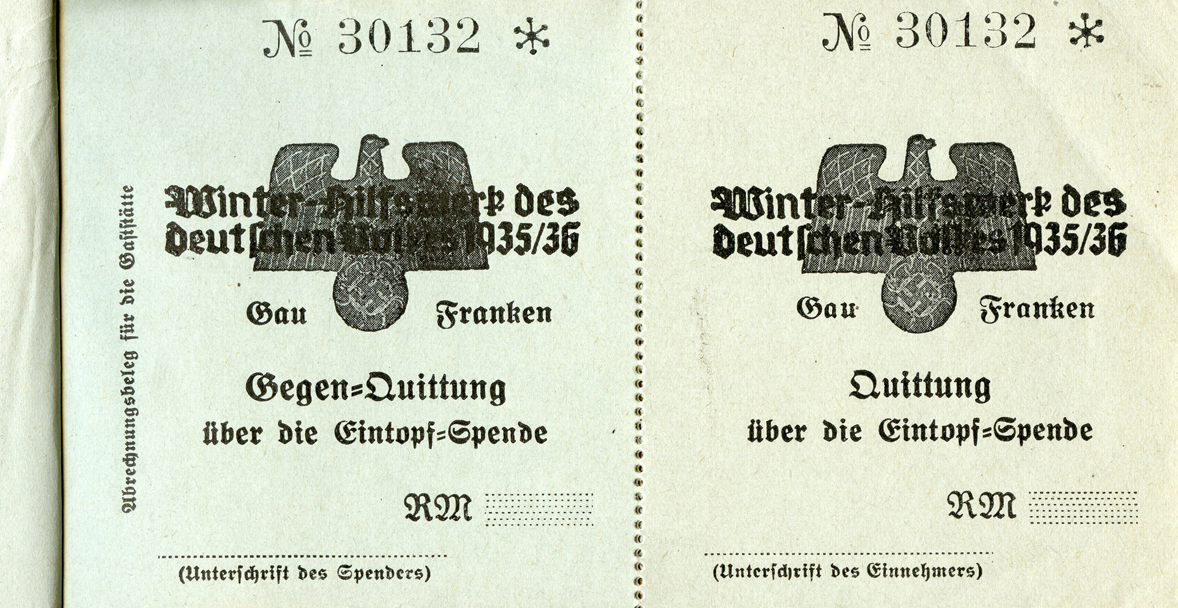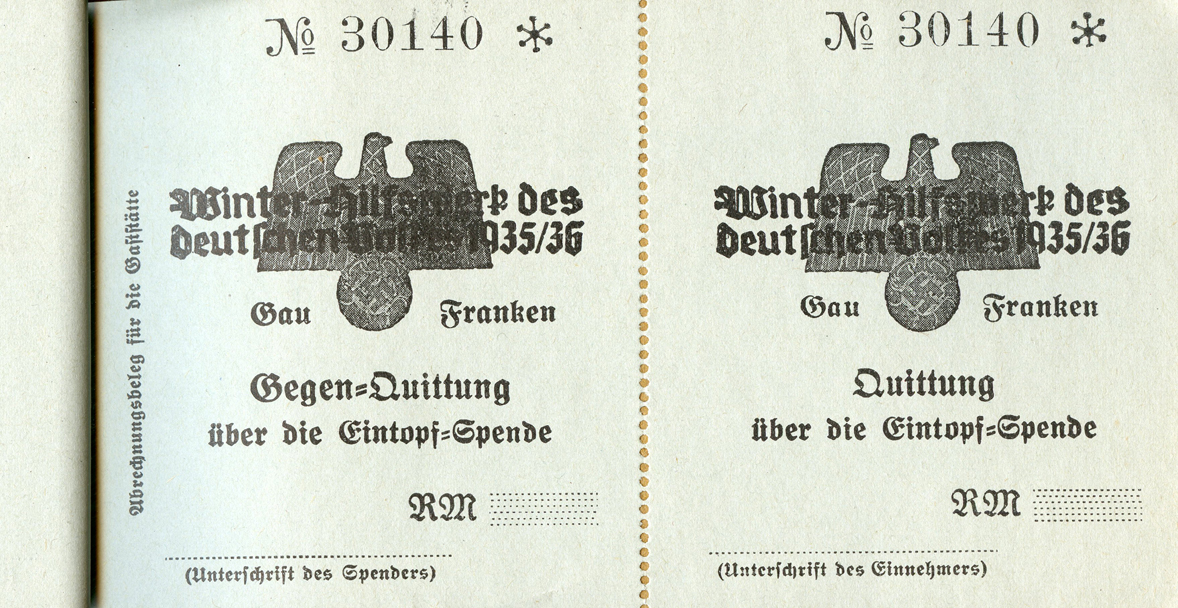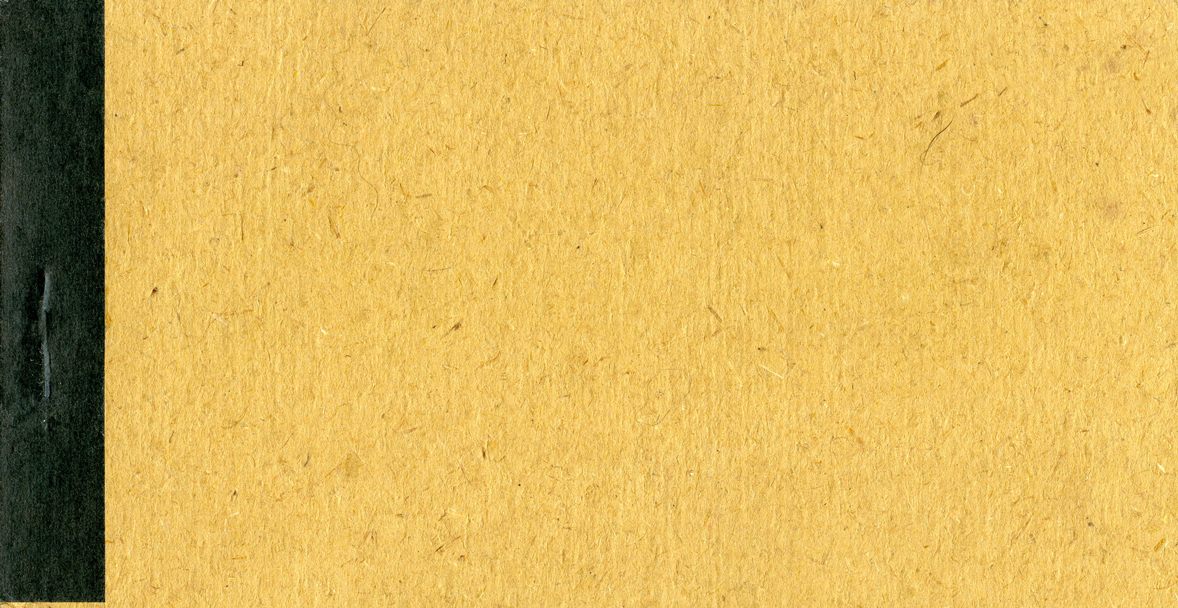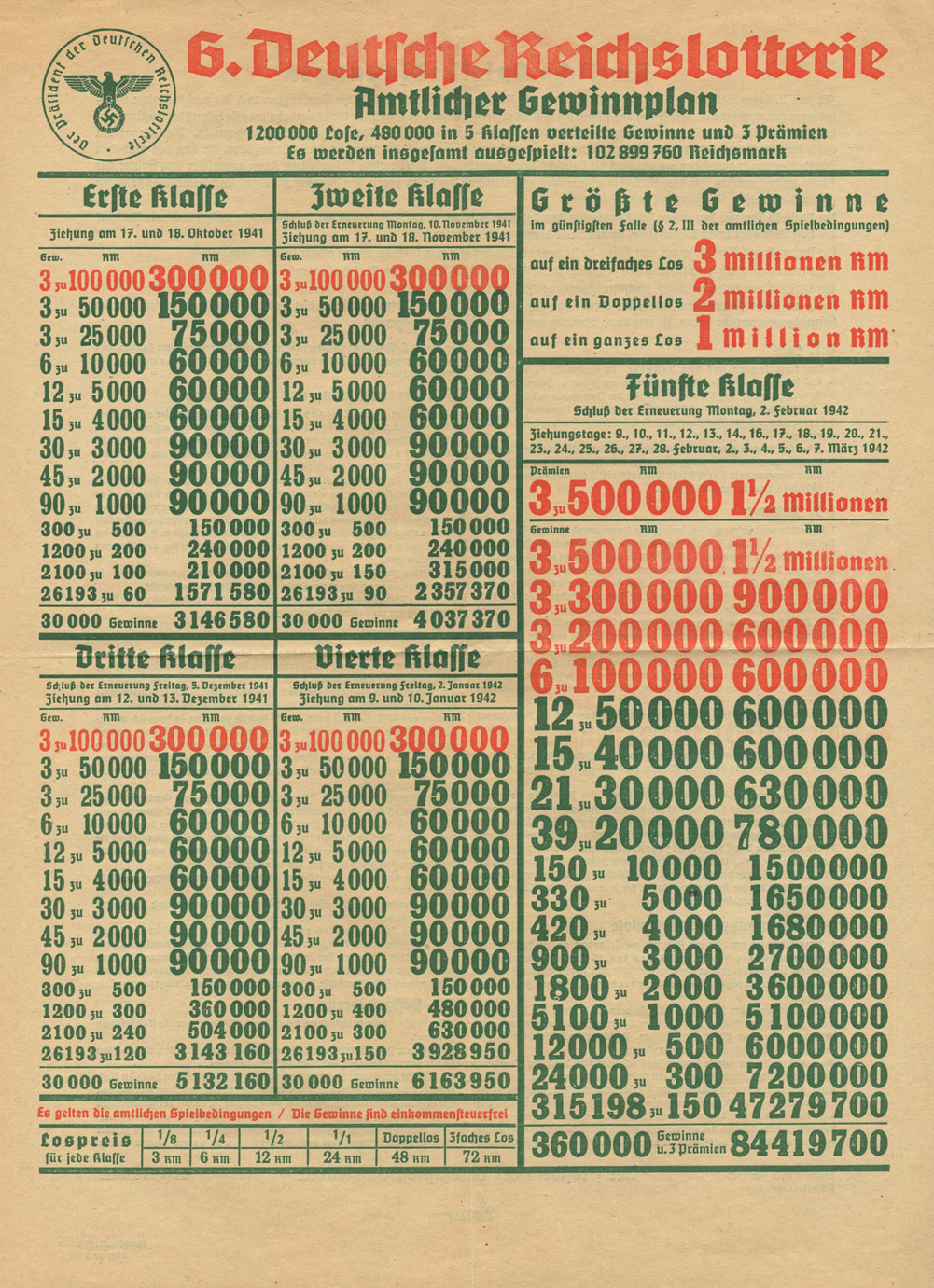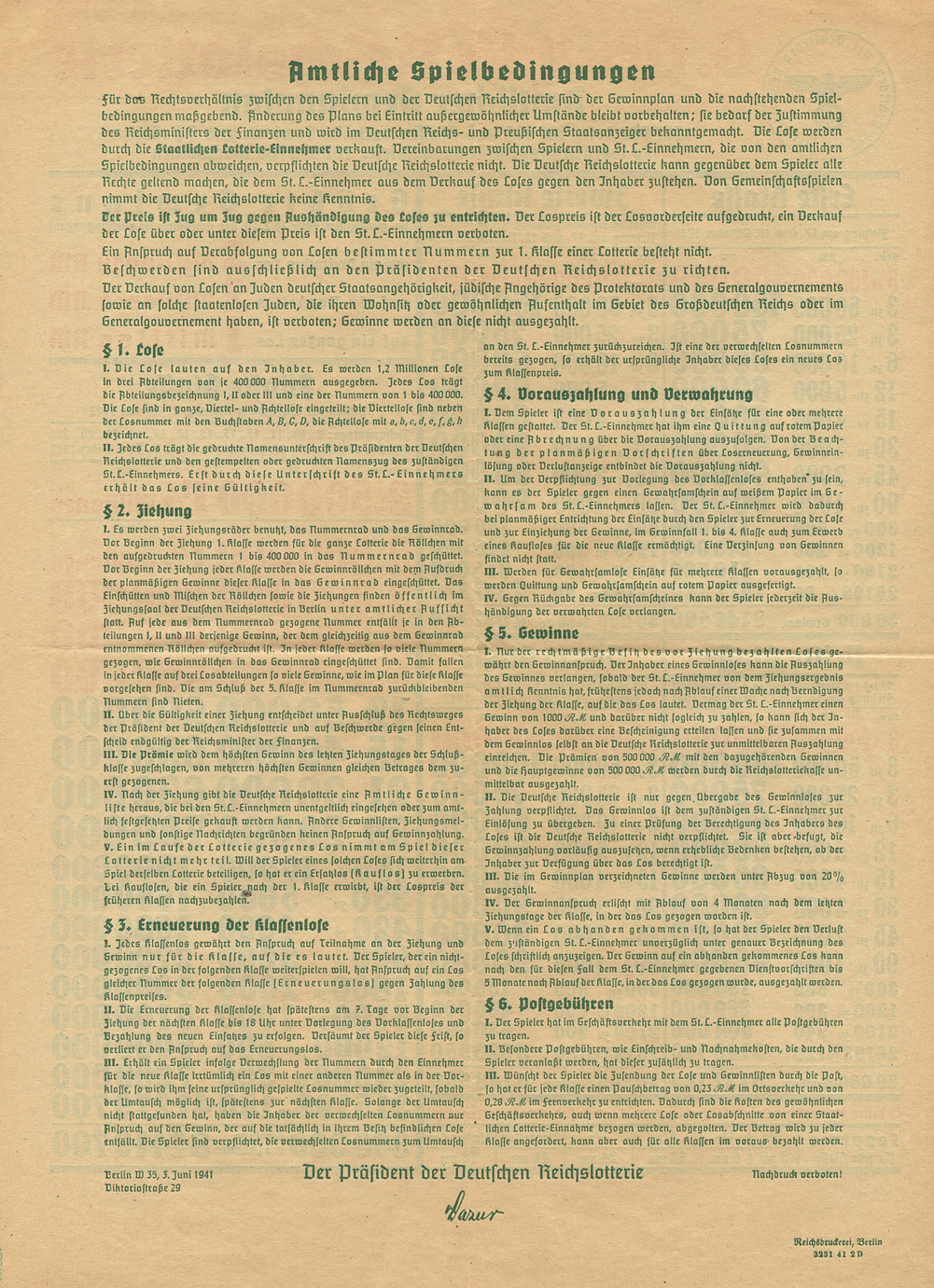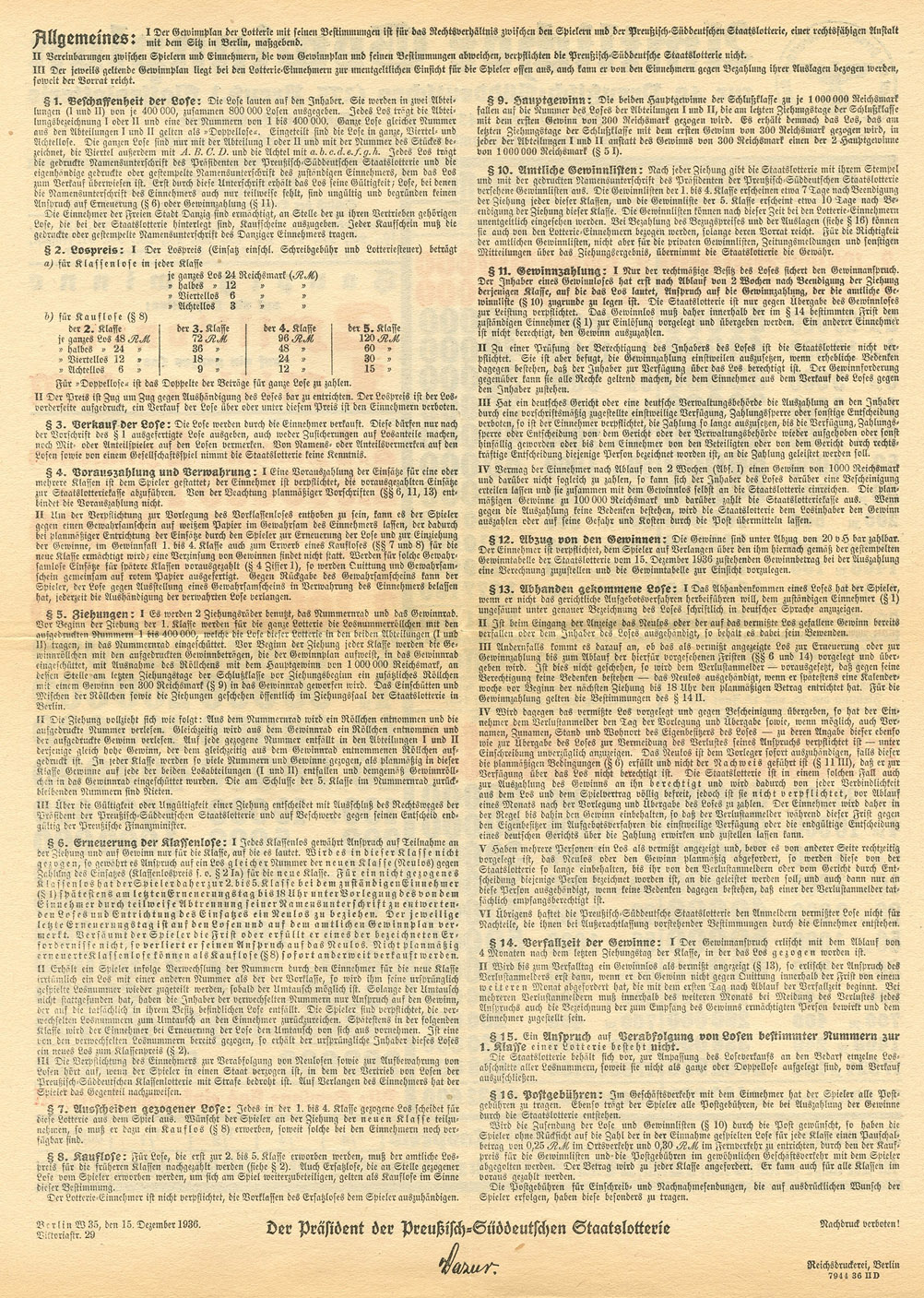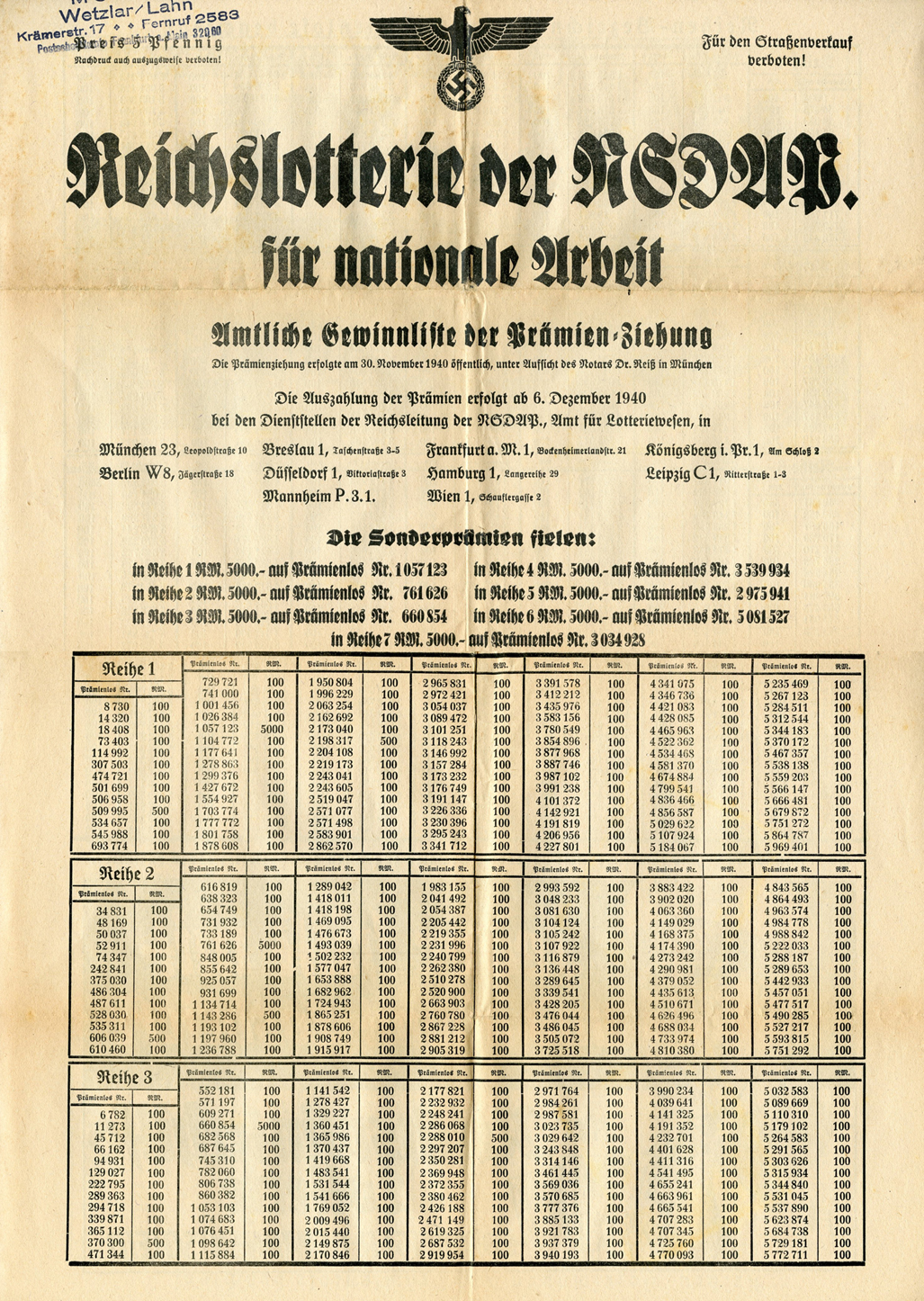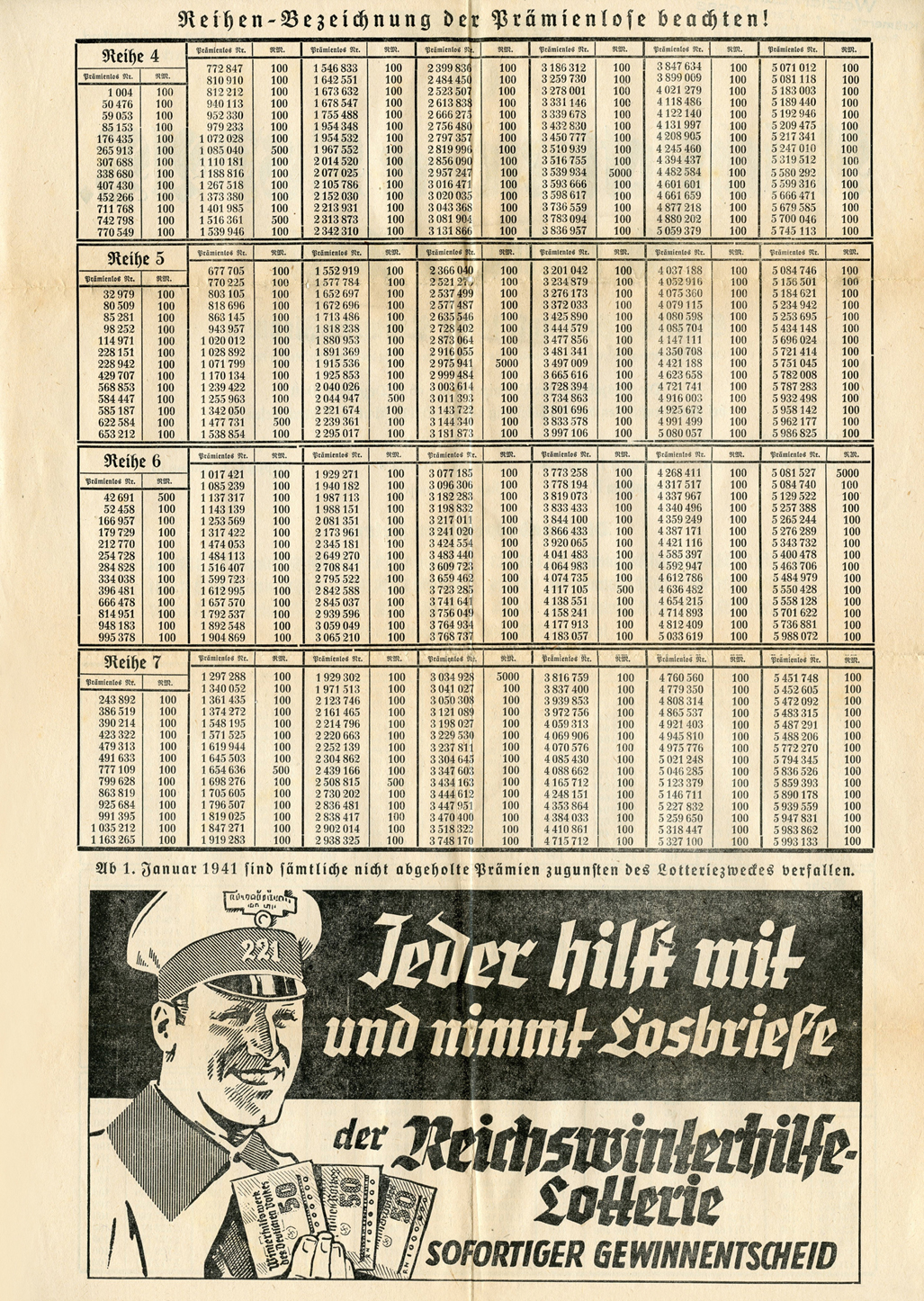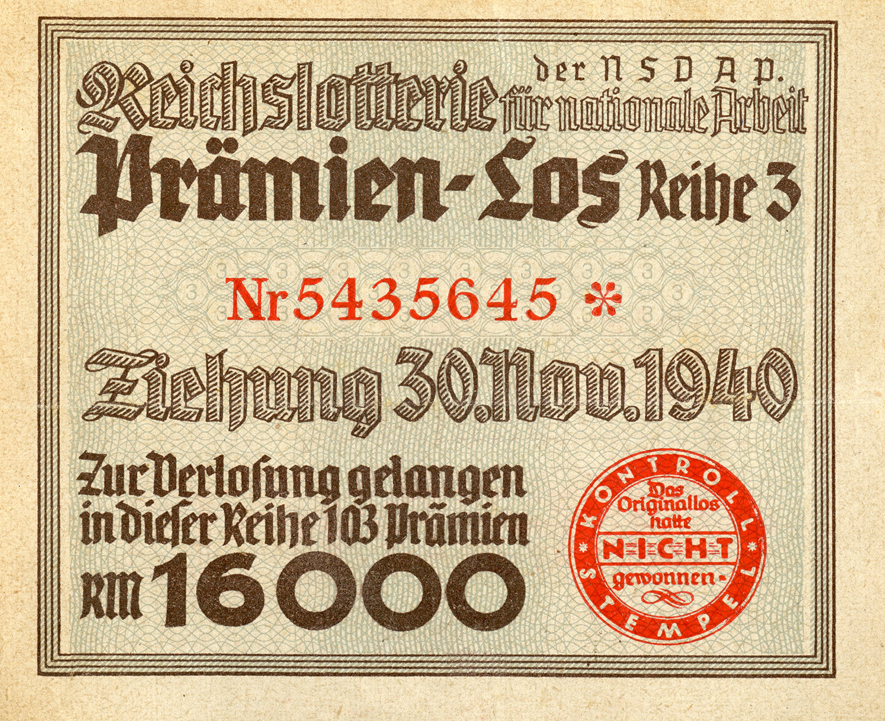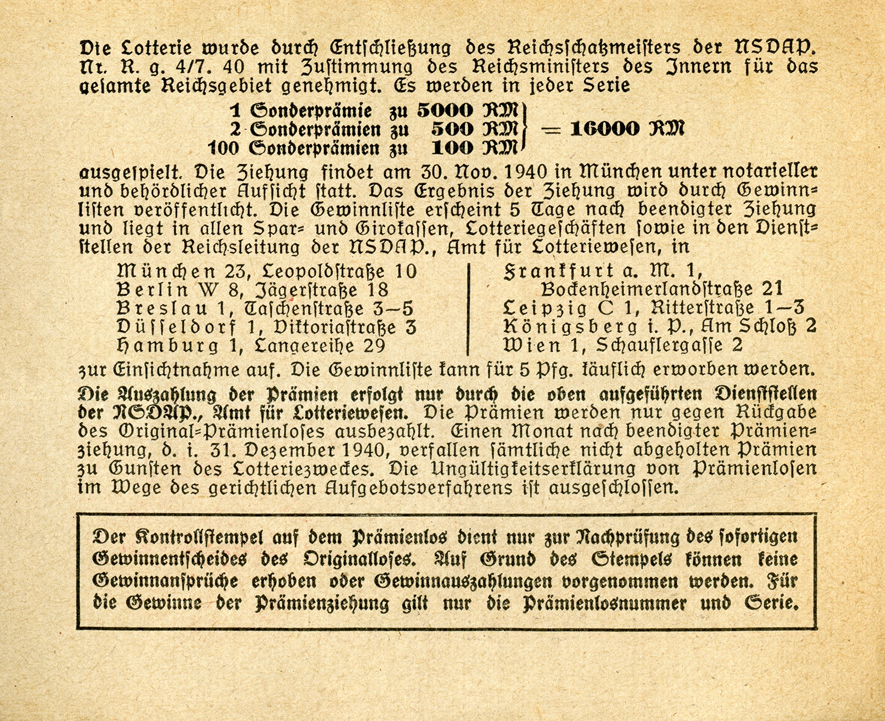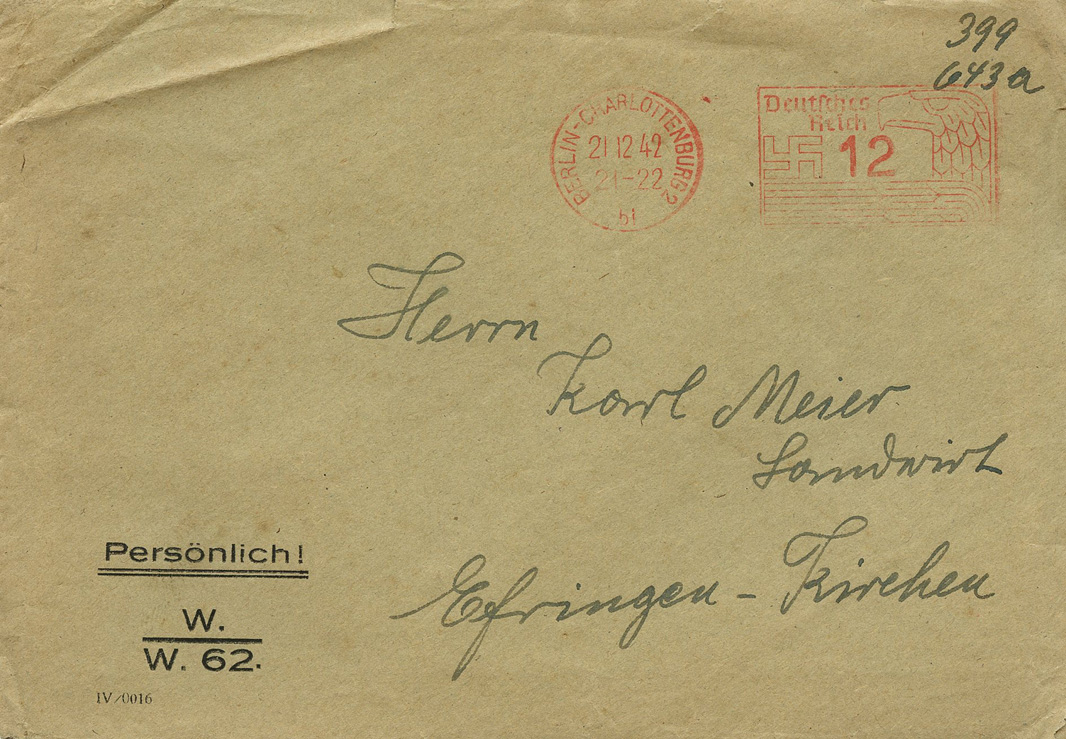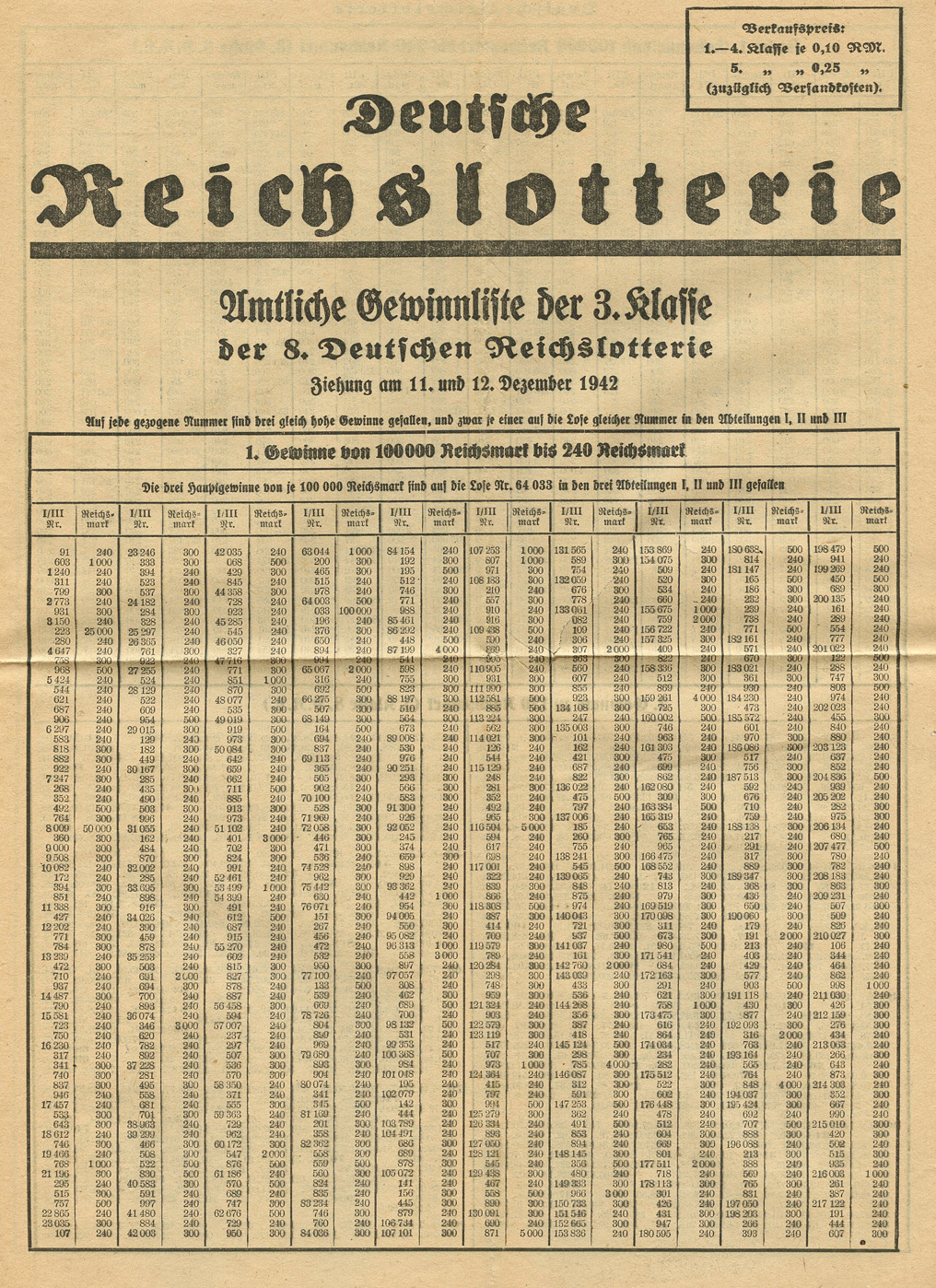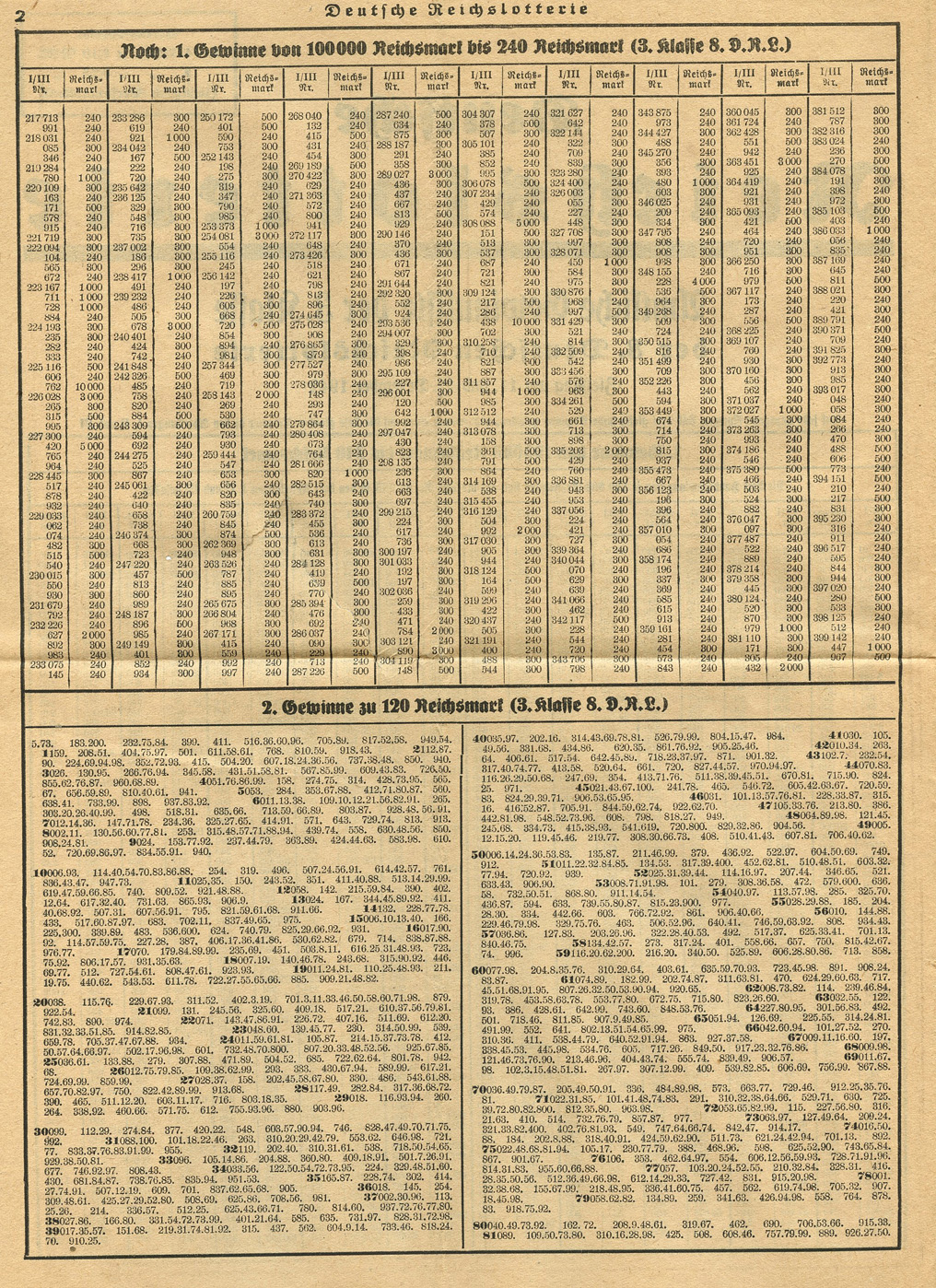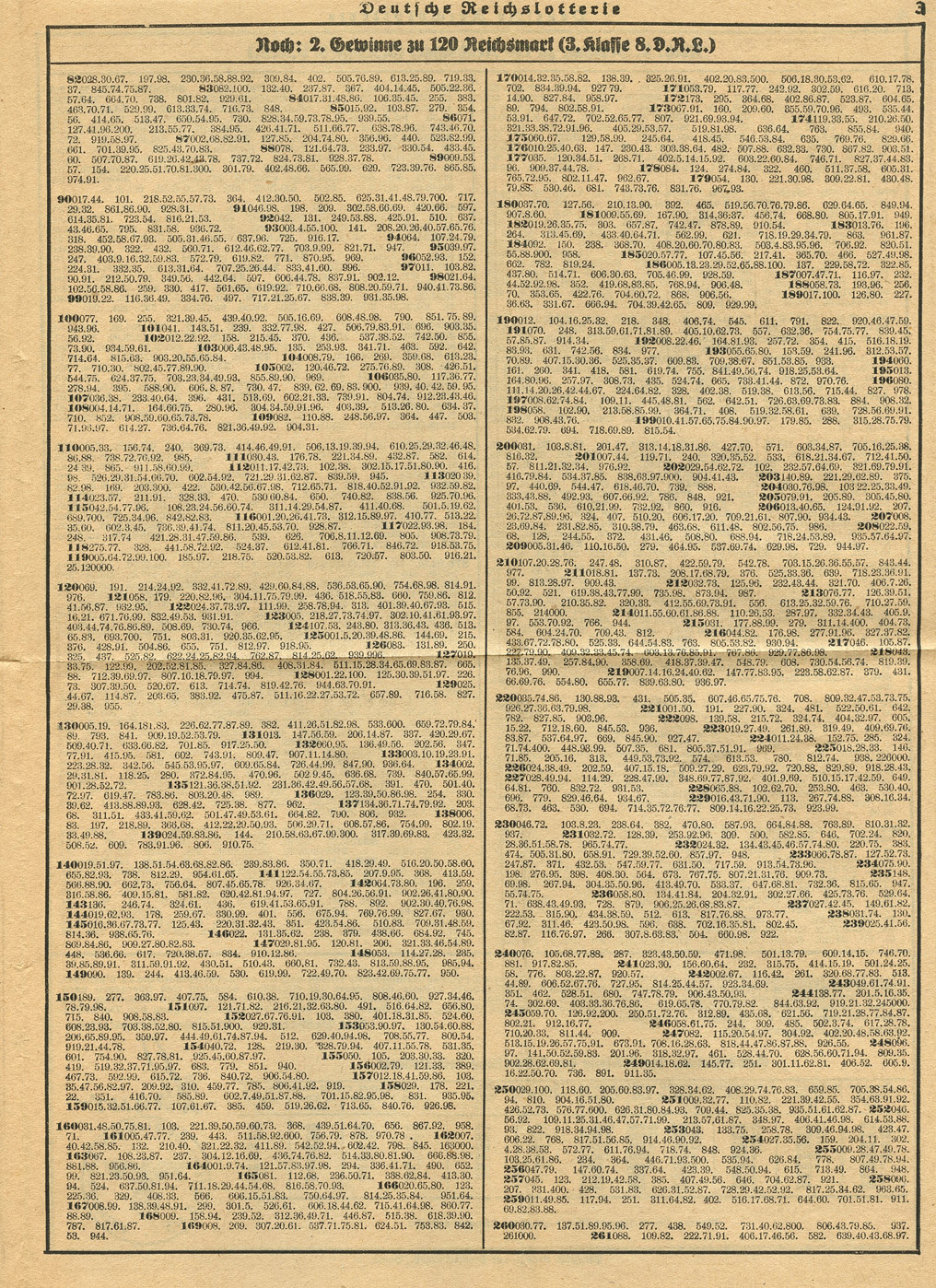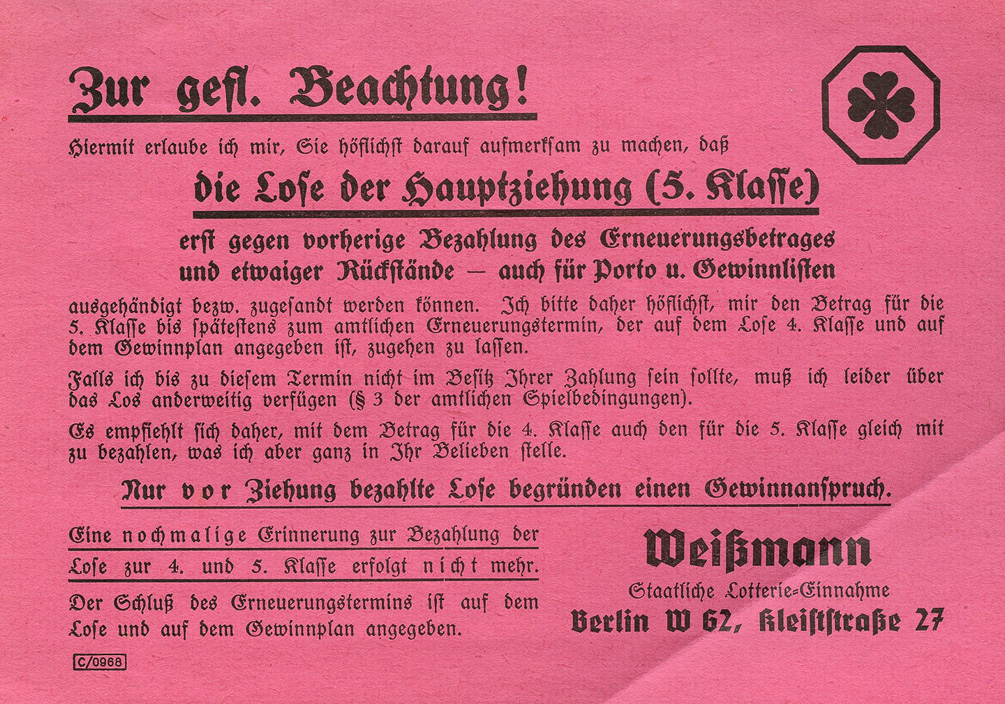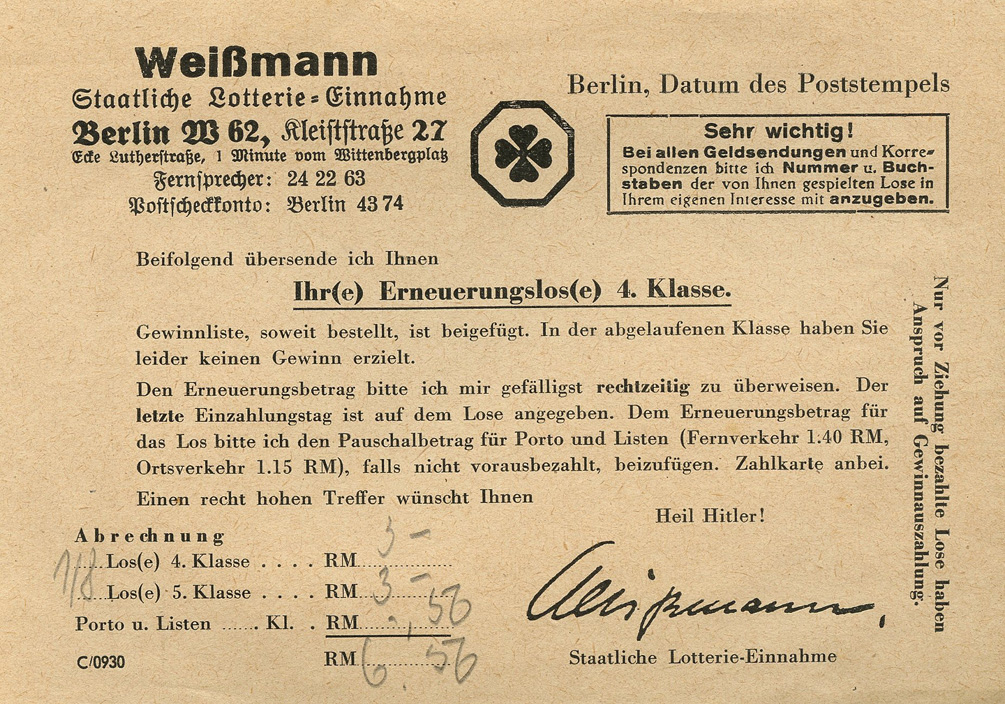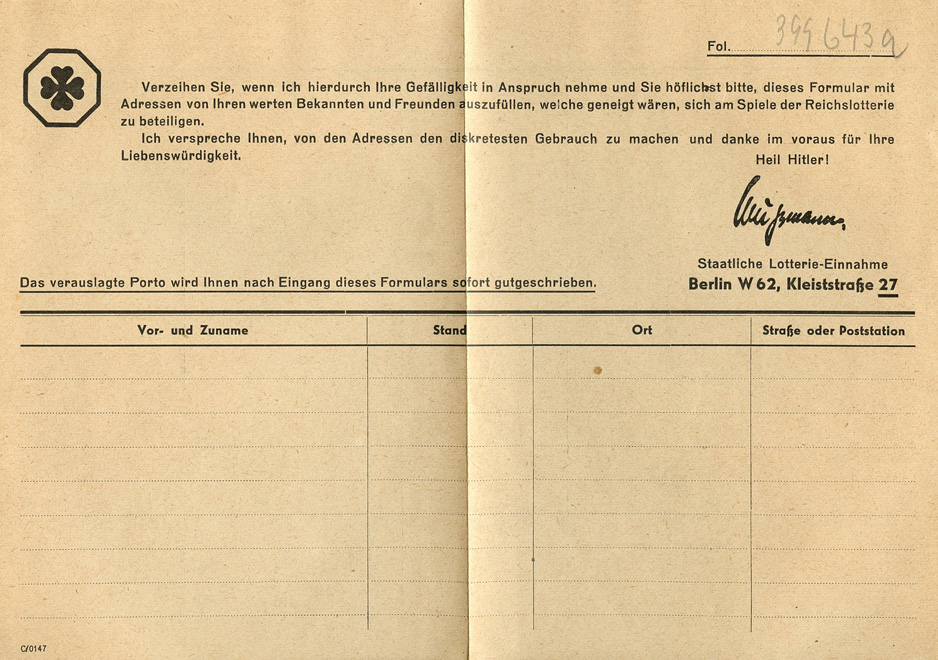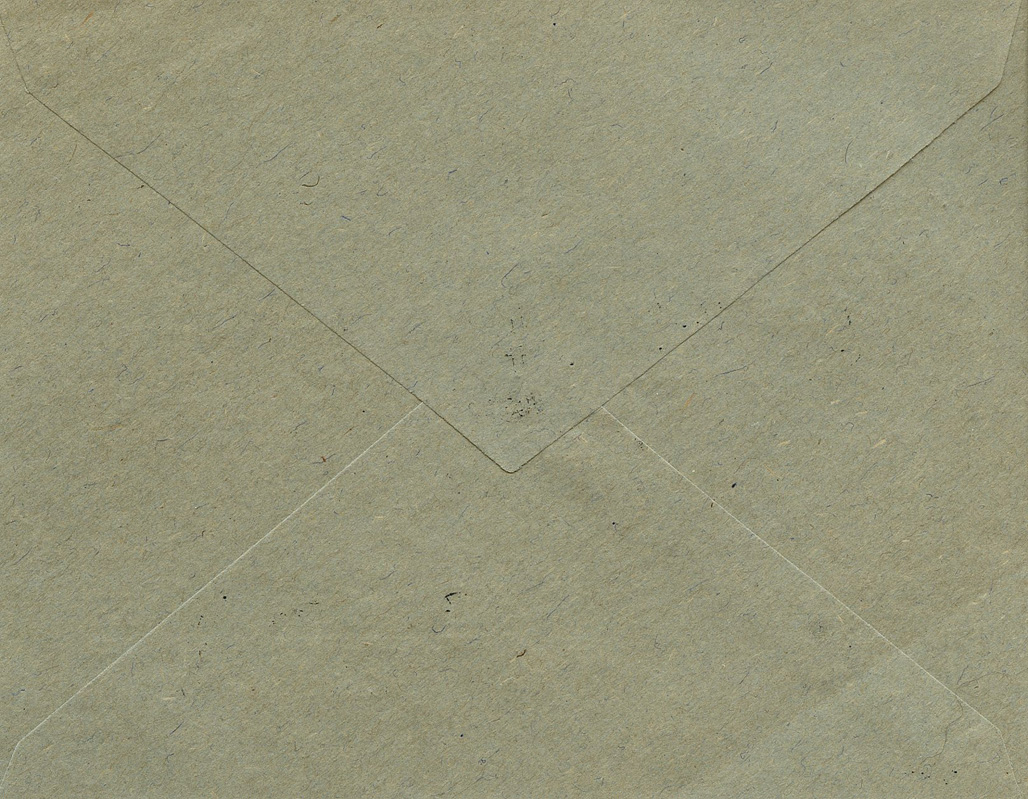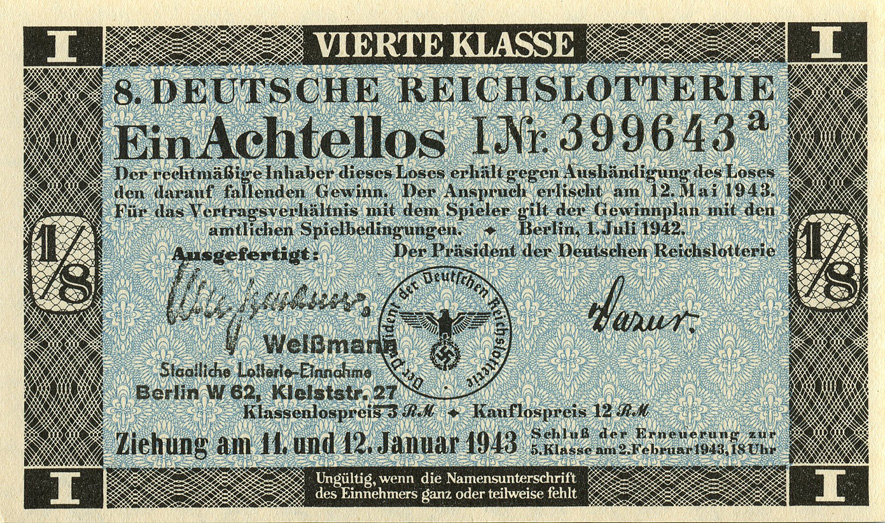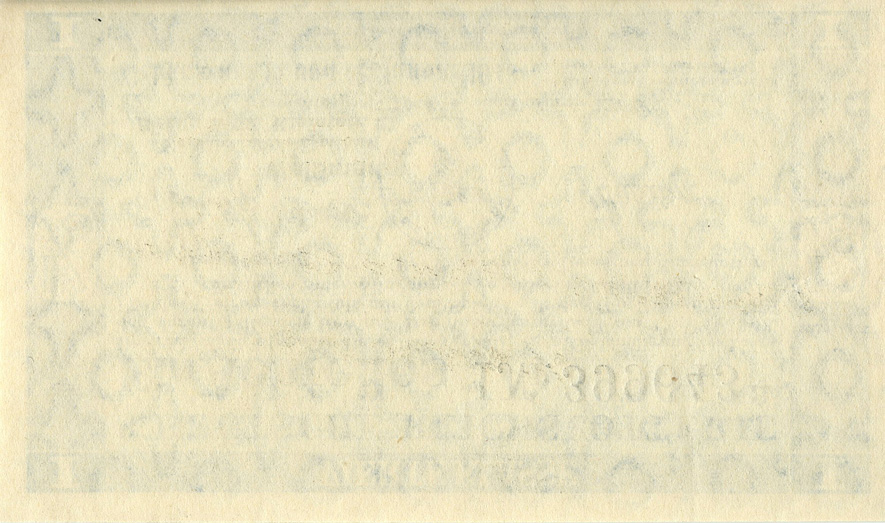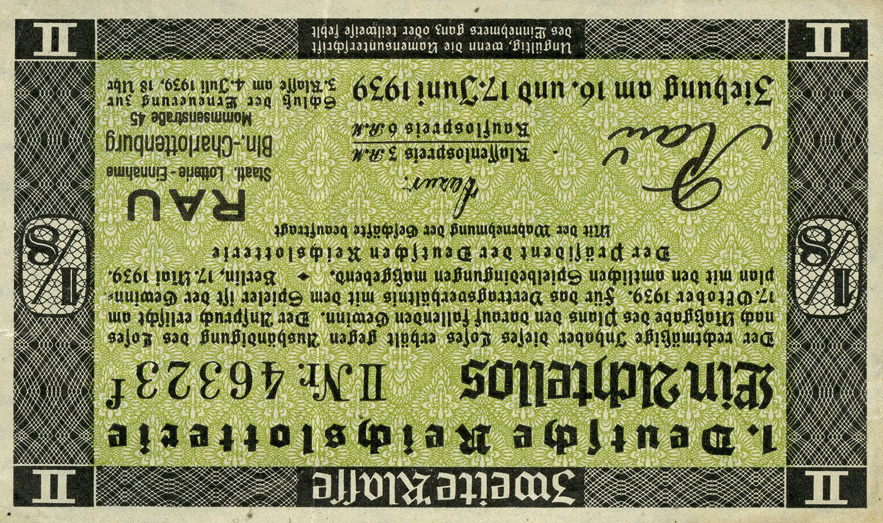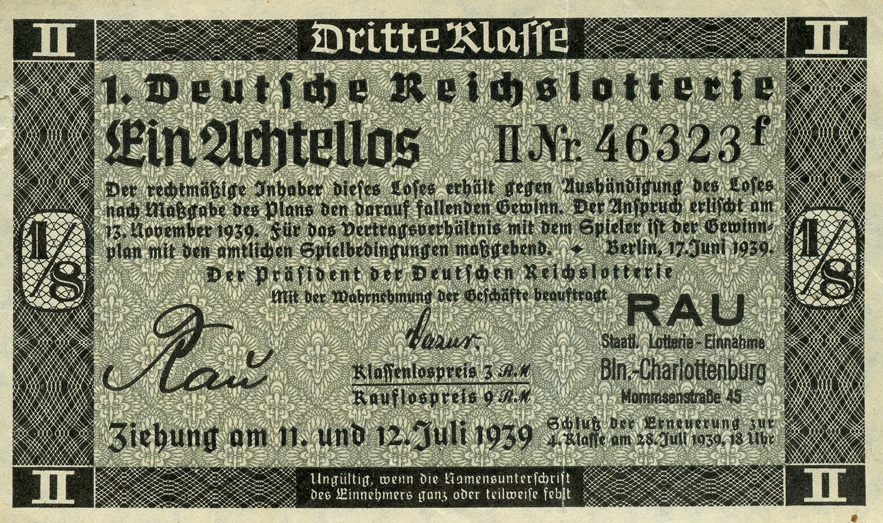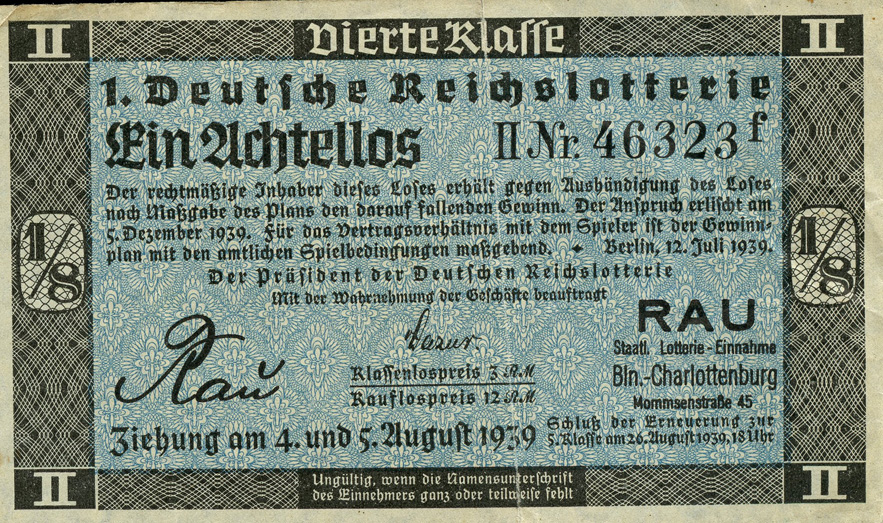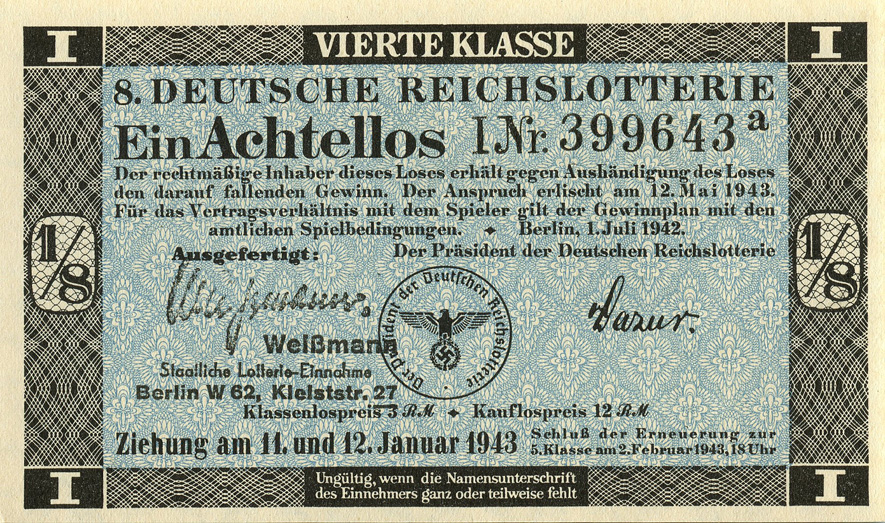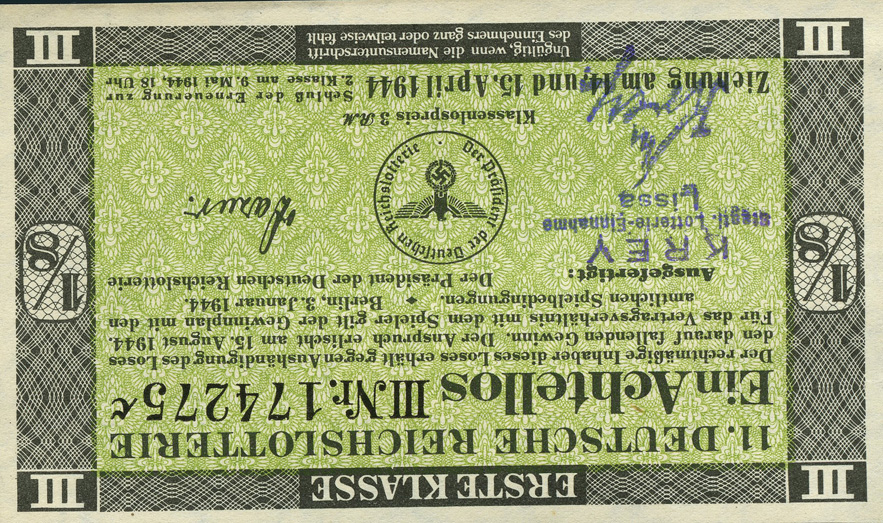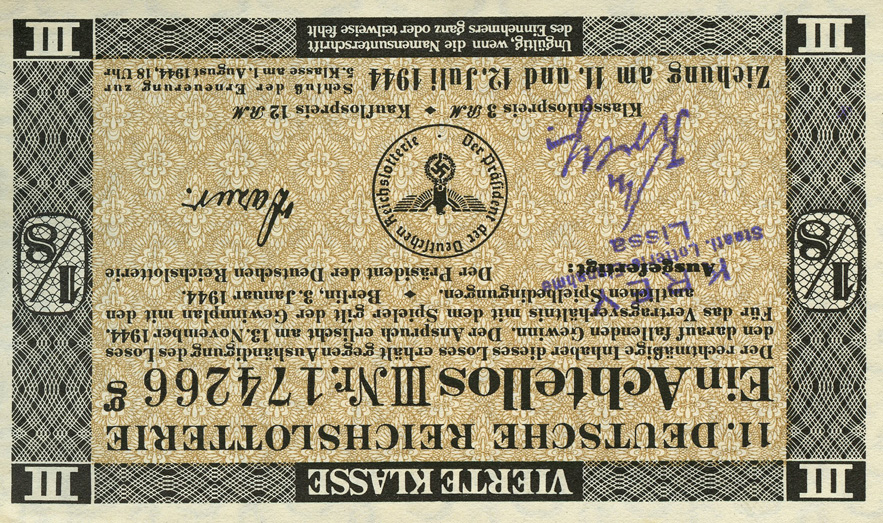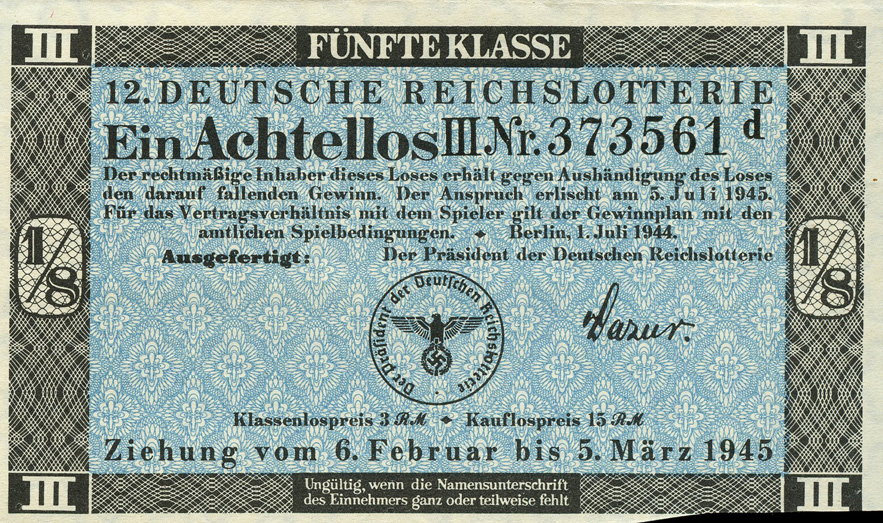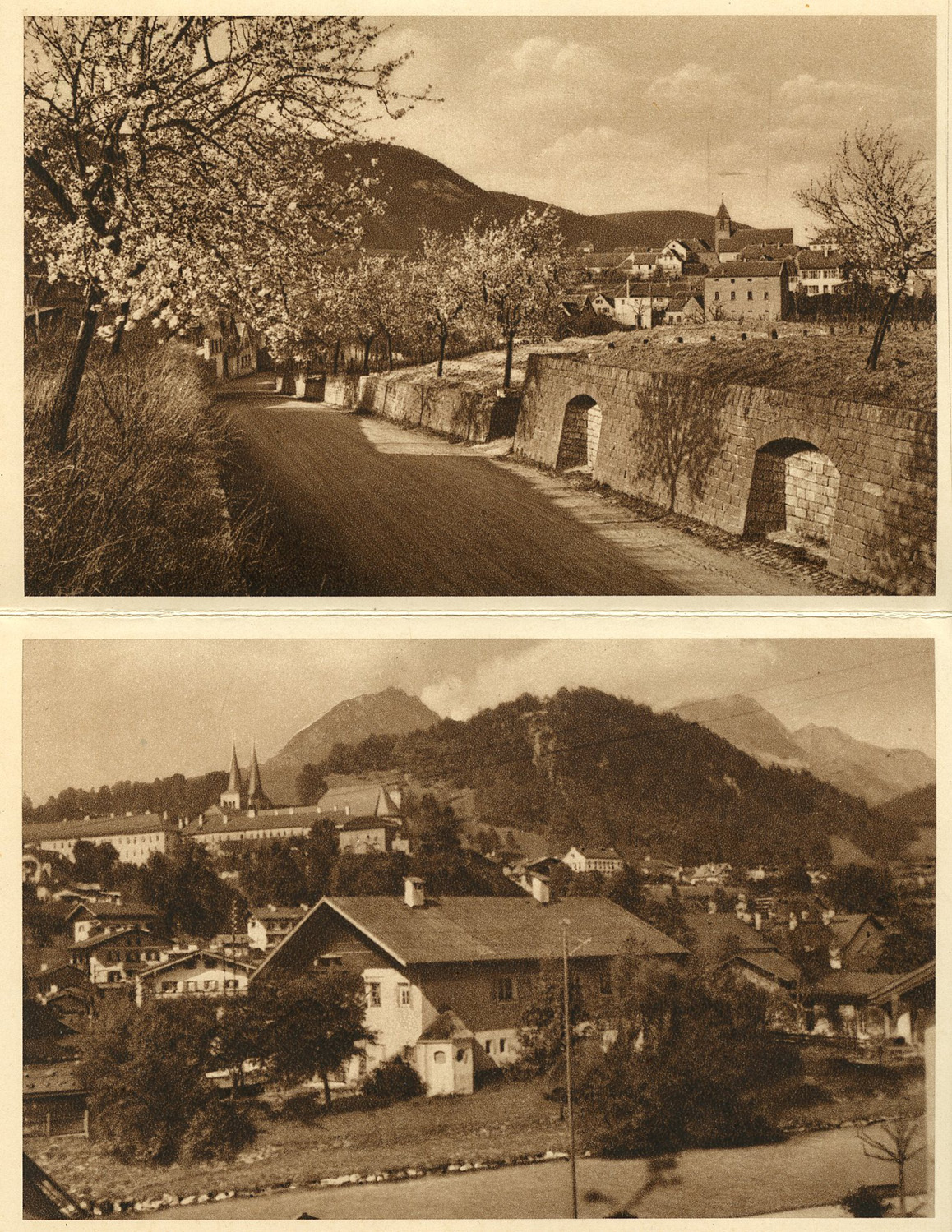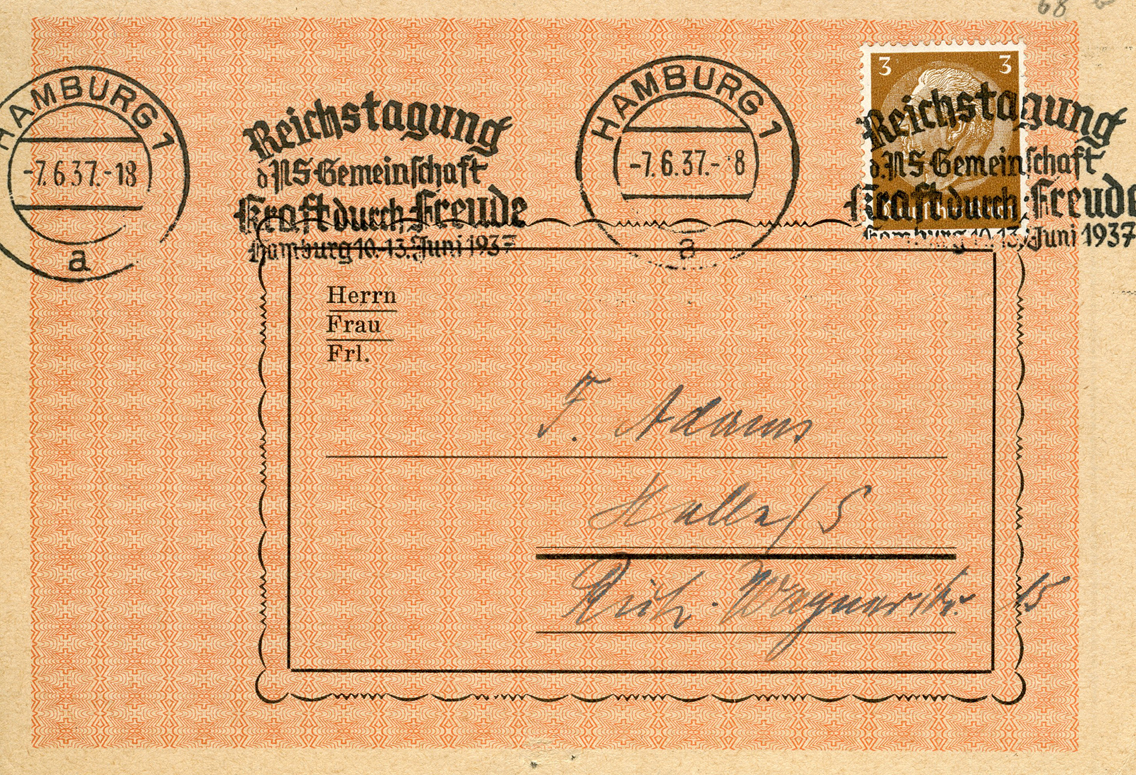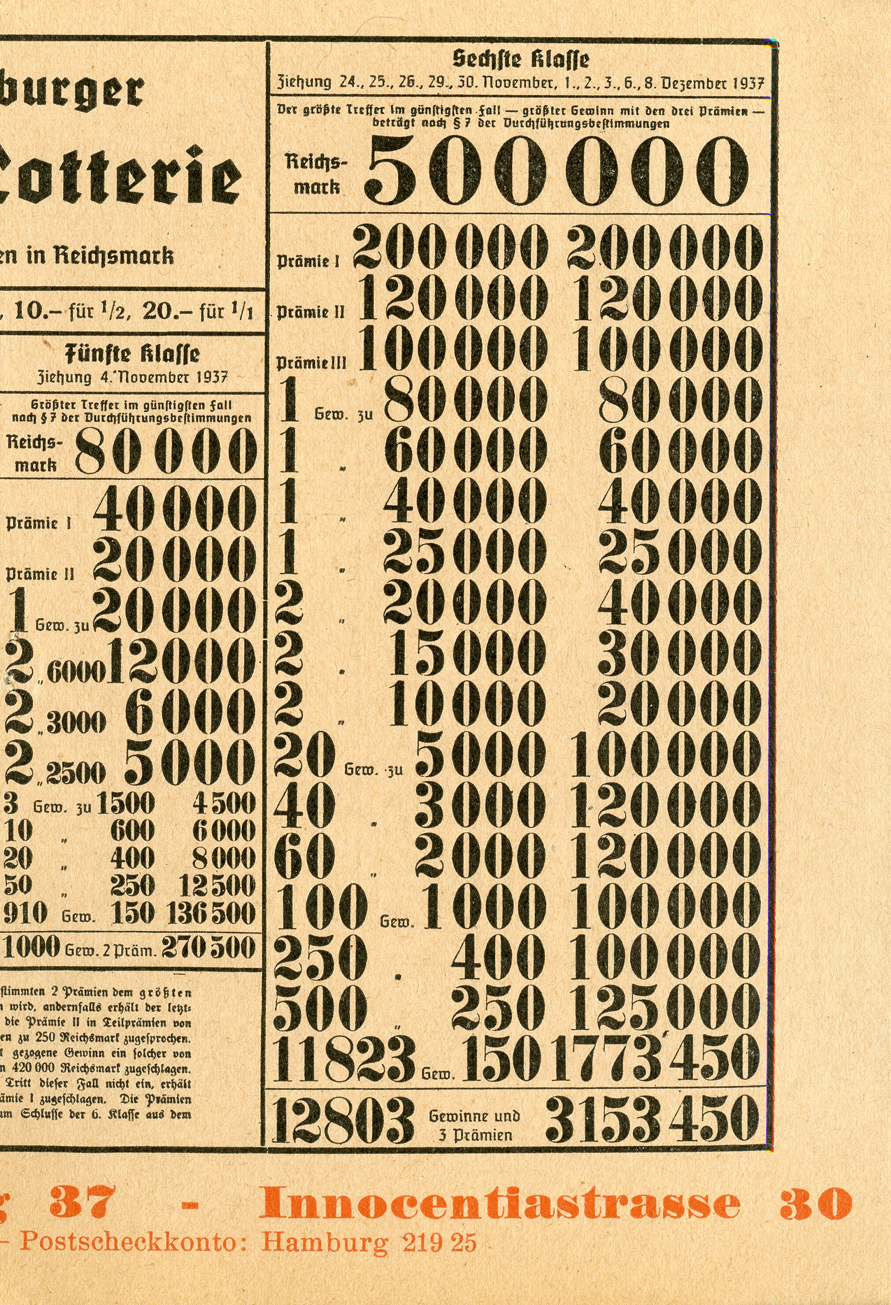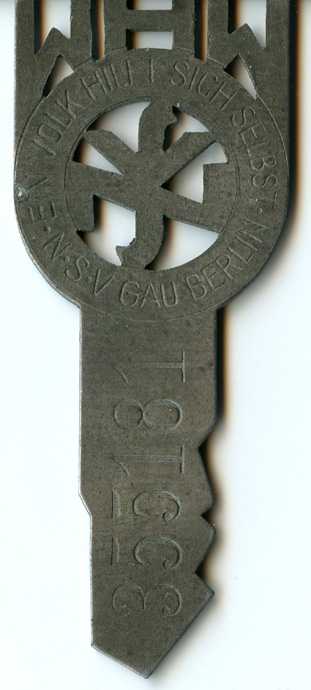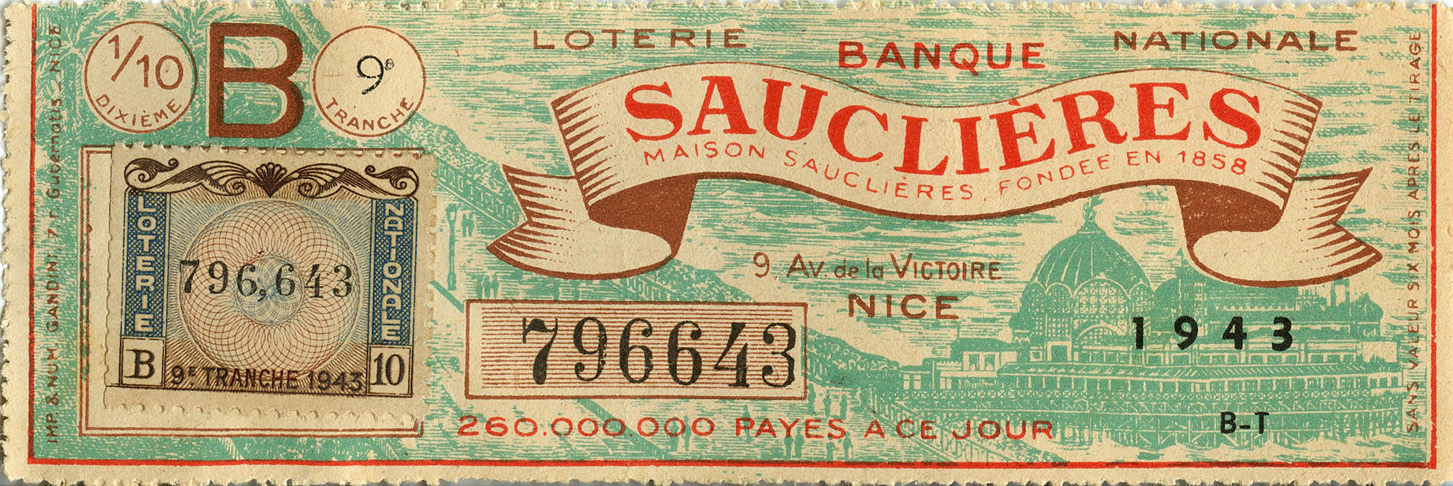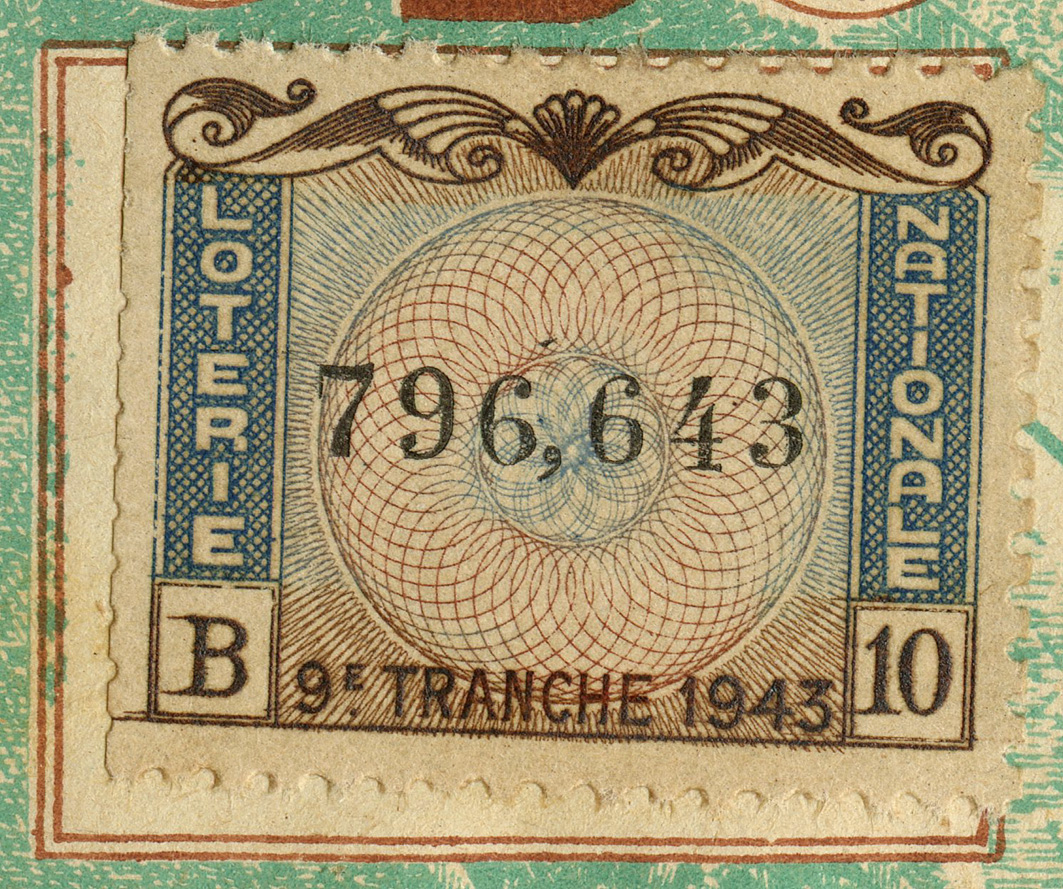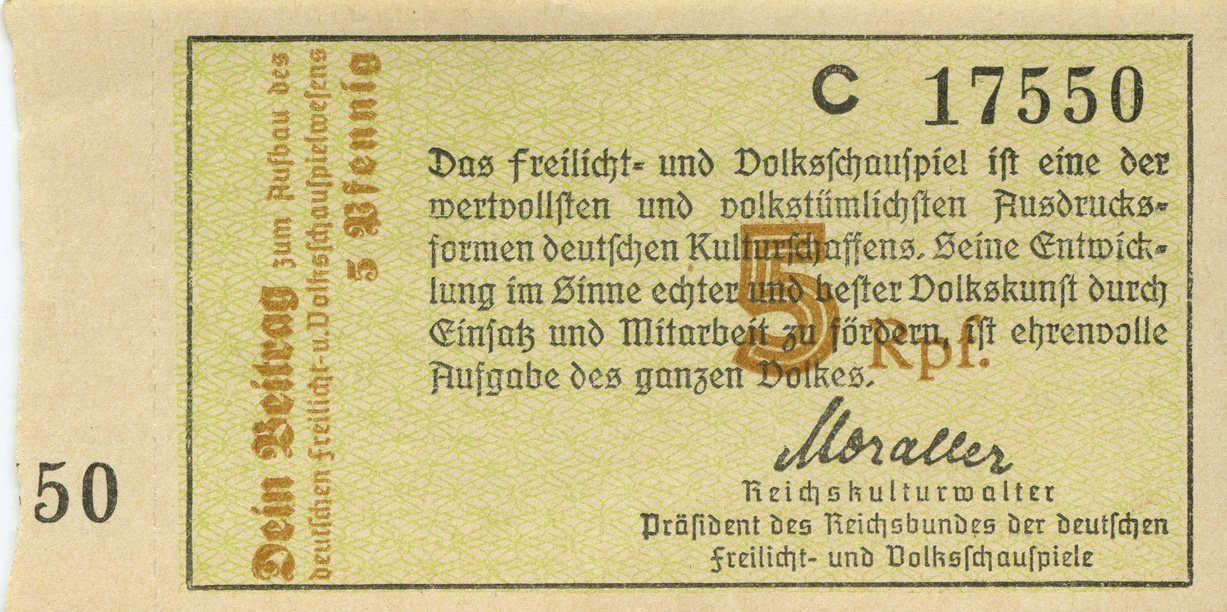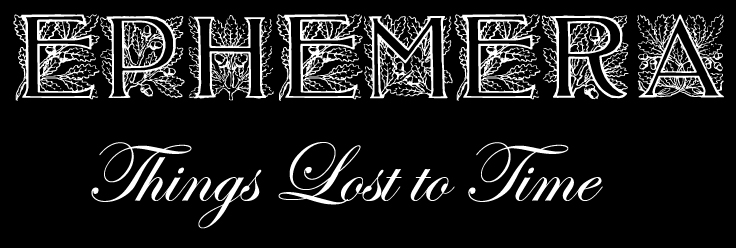
Or more precise 'vintage printed or written items which originally served some specific purpose and were not expected to be retained or preserved.'
Some examples of ephemera are theater programs, posters for events or concerts, flyers, ticket stubs, cigar labels, receipts, political leaflets and documents of various kinds.
[Below: This document, called a 'Führungszeugnis', is a police clearance certificate. The rest says 'polizeilich gemeldet und dass über ihn in den polizeilichen Listen eine Strafe nicht verzeichnet ist' which means 'registered with the police and that there is no record of a penalty against him in the police records.']
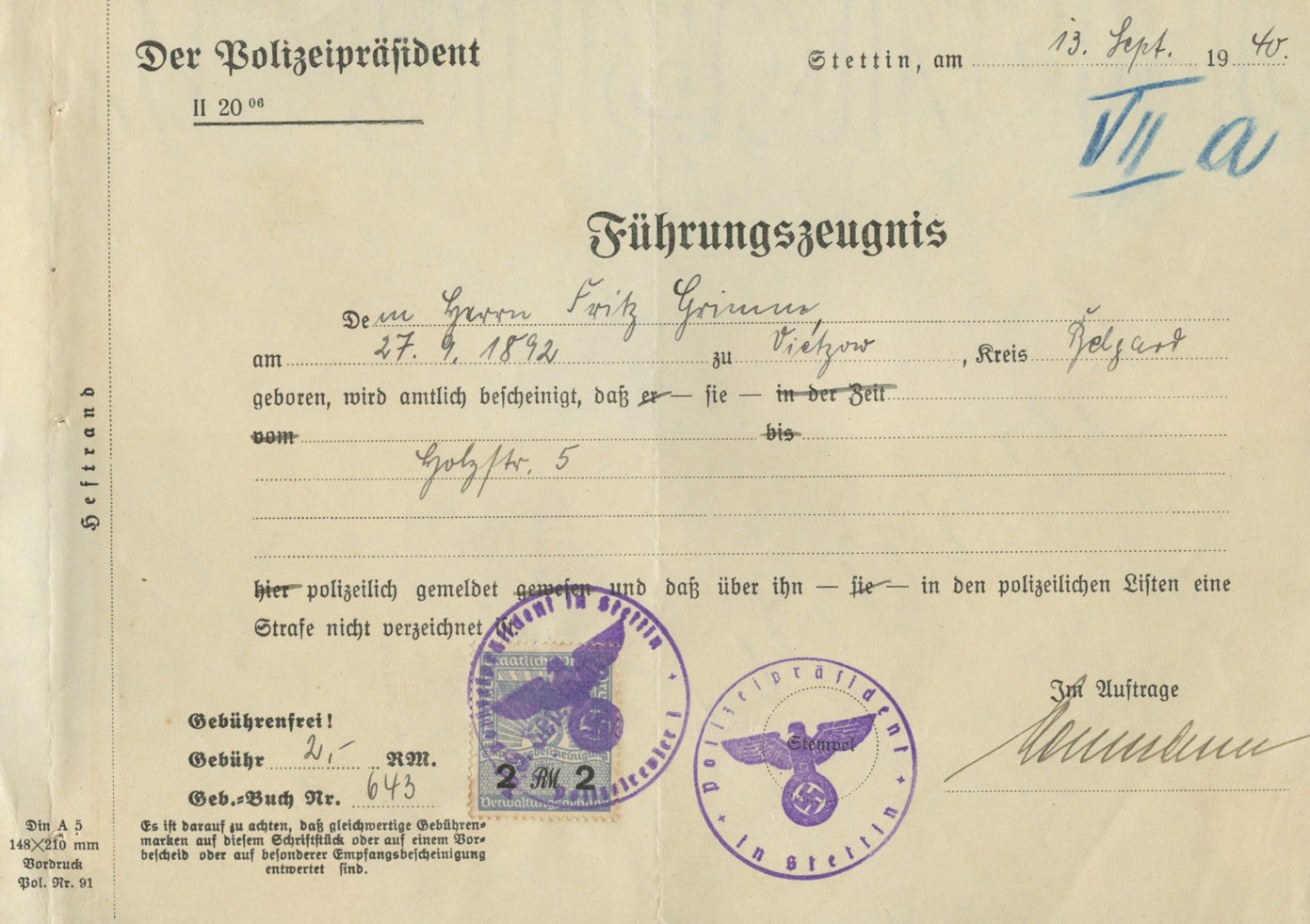

[Below: This is a contact between the German Reichbahn (train service) and an individual regarding insurance. It says: 'Berechnung der Urkundensteuer' (Calculation of the tax on documents) and below it says: 'Zwischen der Deutschen Reichsbahn, Reichsbahndirektion Stettin und Herrn [name] wird folgender Dienstvertrag Geschlossen' (The following service contract is concluded between Deutsche Reichsbahn, Reichsbahndirektion Stettin and Mr. [name]).]
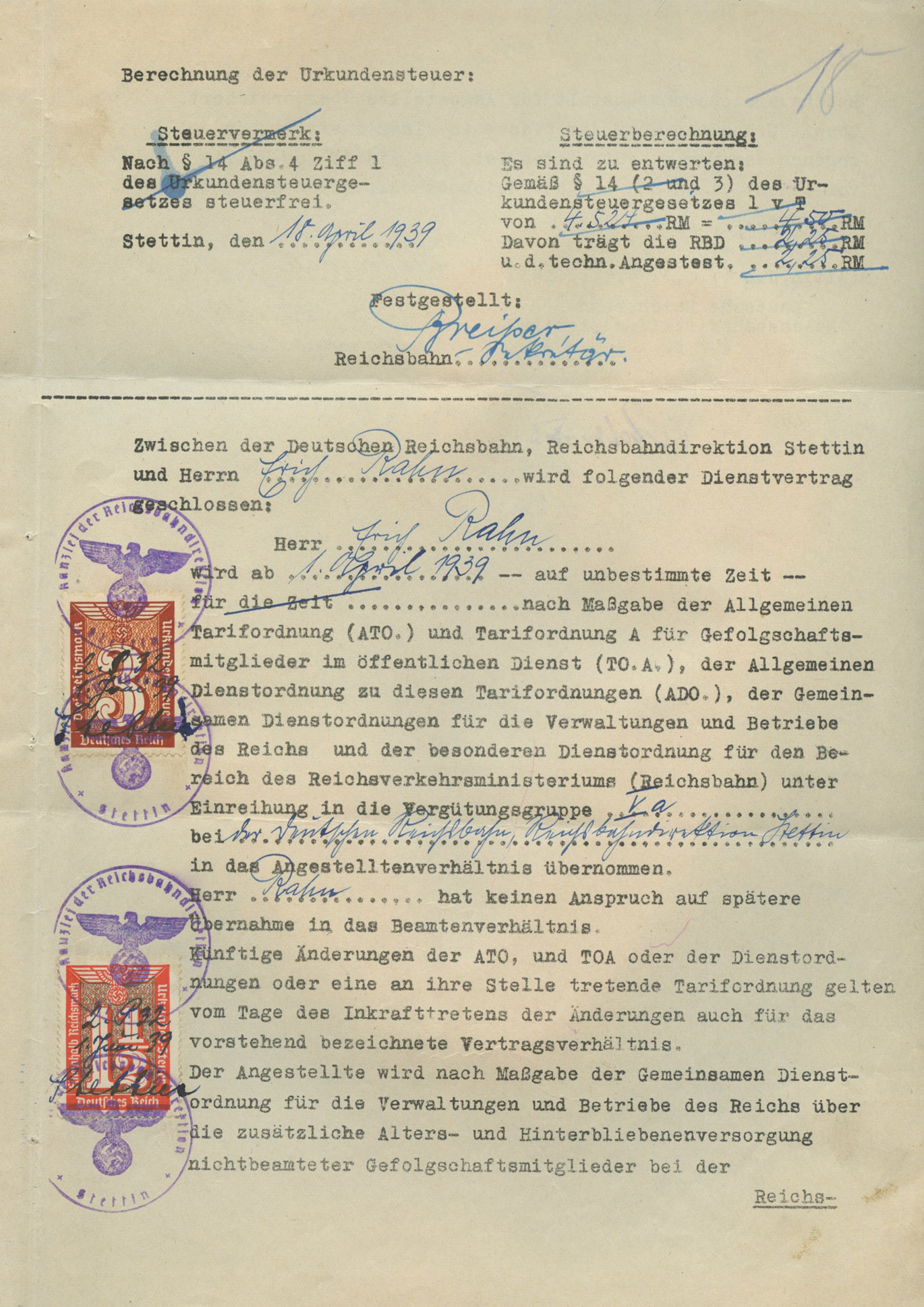
[Below: Tax stamps.]
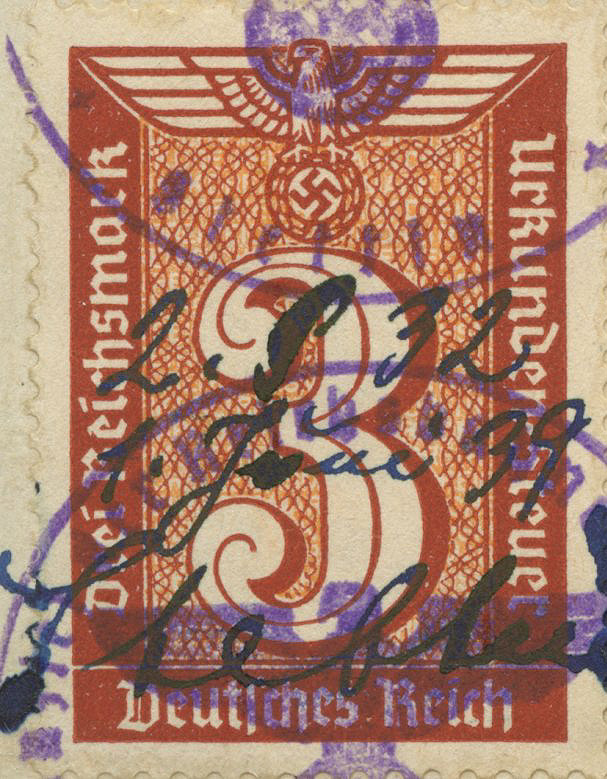
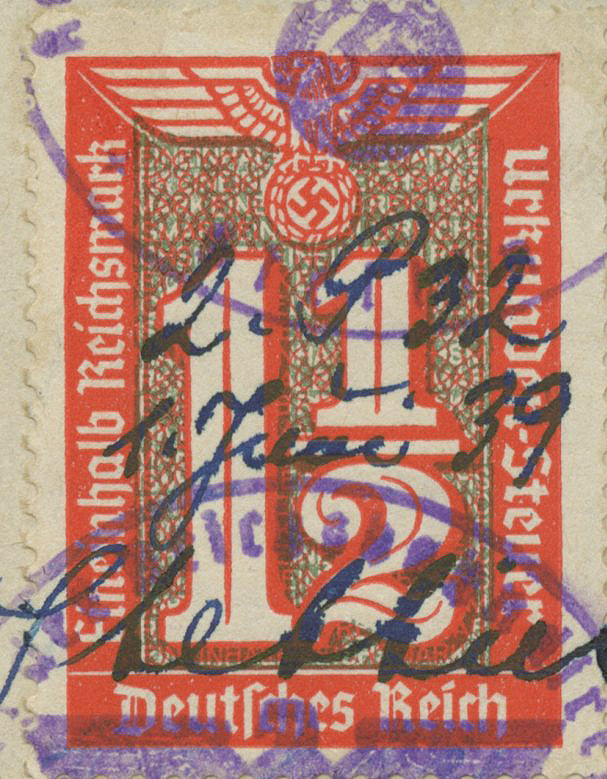
[Below: Reverse of document. 'Reichsversicherungsanstalt für Angestellte überversichert. Soweit Urkundensteuer für diesen in einer Ausferrtigung vollzogenen Vertrag zu entrichten ist, ist sie je zur...' (Reich Insurance Institution for Salaried Employees overinsured. Insofar as documentary tax is payable for this contract executed in one copy, it is to be paid at the rate of...)]
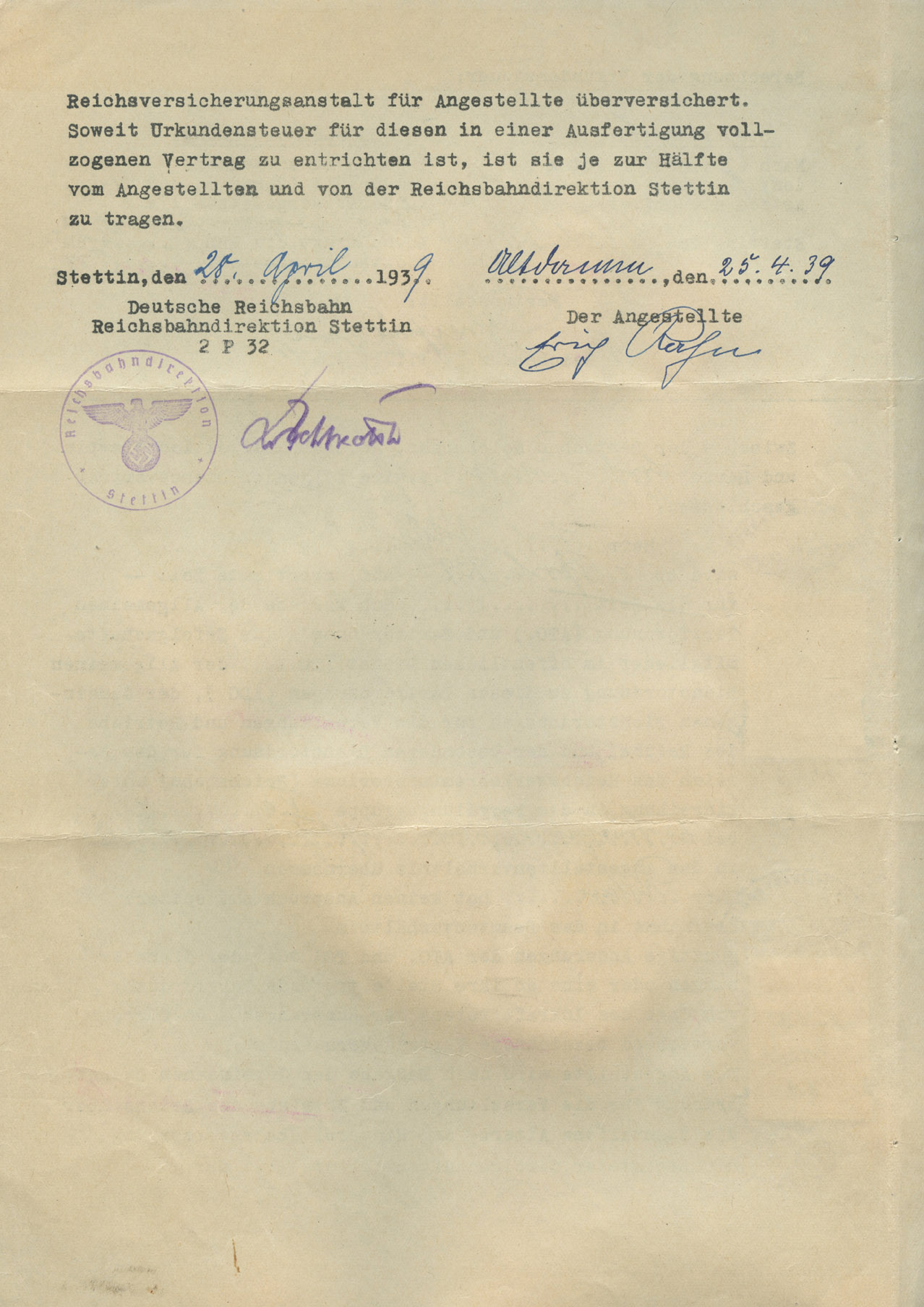

[Below: This is a marriage certificate. It says 'Beglaubigte Abschrift aus dem Heiratsregister des Standesamts' (Certified copy from the marriage register of the registry office).]

[Below: Reverse of document.]
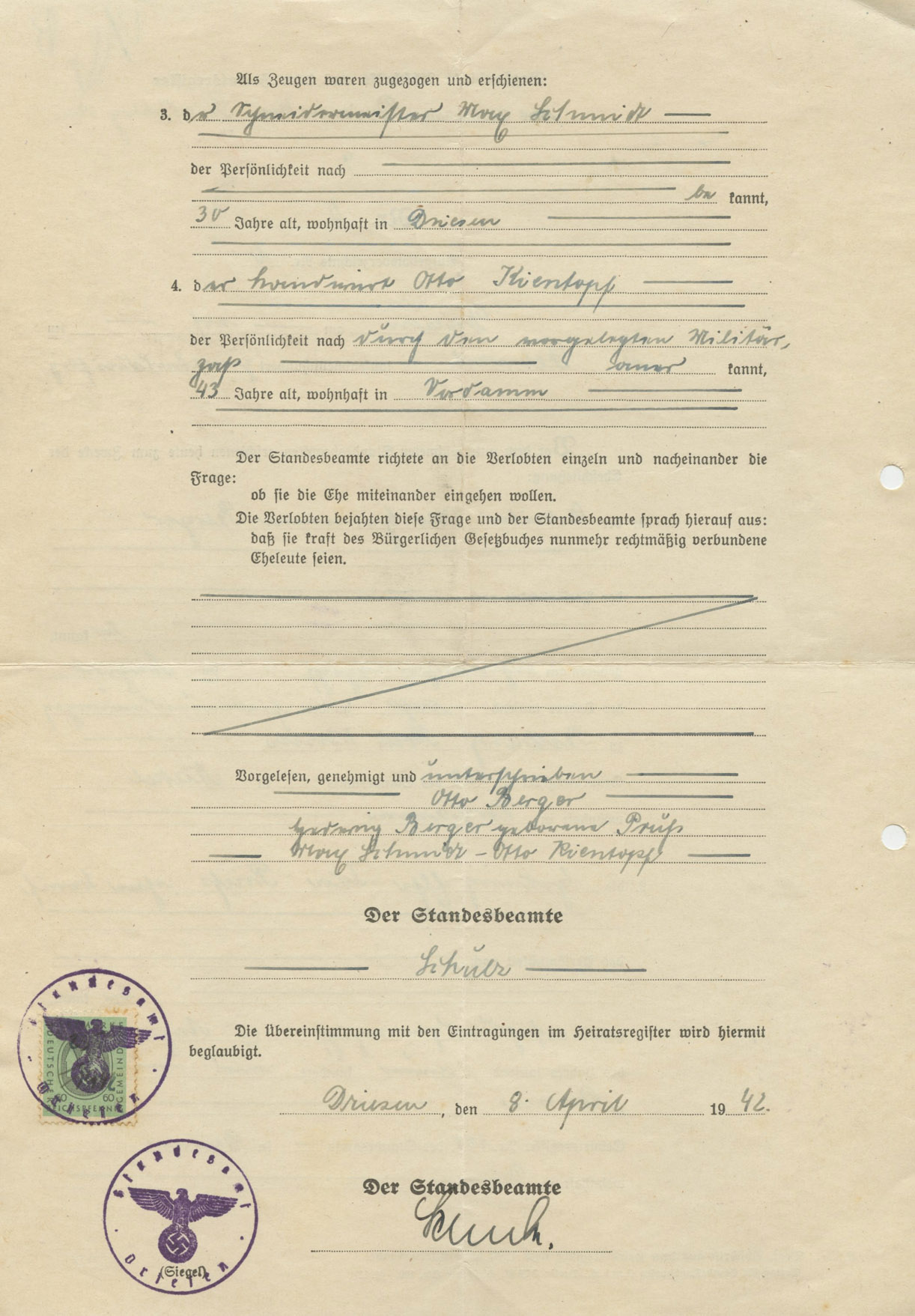

[Below: This is a 'Geburtsurkunde' (Birth Certificate). This person was born in 1852 and the document is from 1942, making this lad 90 years old.]

[Below: Tax stamp.]


[Below: At the top is the word 'Abschrift' (Transcript or copy), below it is says Germany and 'Hoheitsabzeichen' which literally translates as 'Sovereignty badge'. Below that it says 'Rückkehrerausweis' which means 'Returnee pass'. This person was from a place called Krissau, which was located in Danzig. The person's profession was a locomotive driver and they have four children. It states that their previous nationality was Poland. It also says that they have a slim build, grey eyes and hair, and no special features. It's signed by the local leader of the SD (Sicherheitsdienst, the intelligence agency of the SS).]
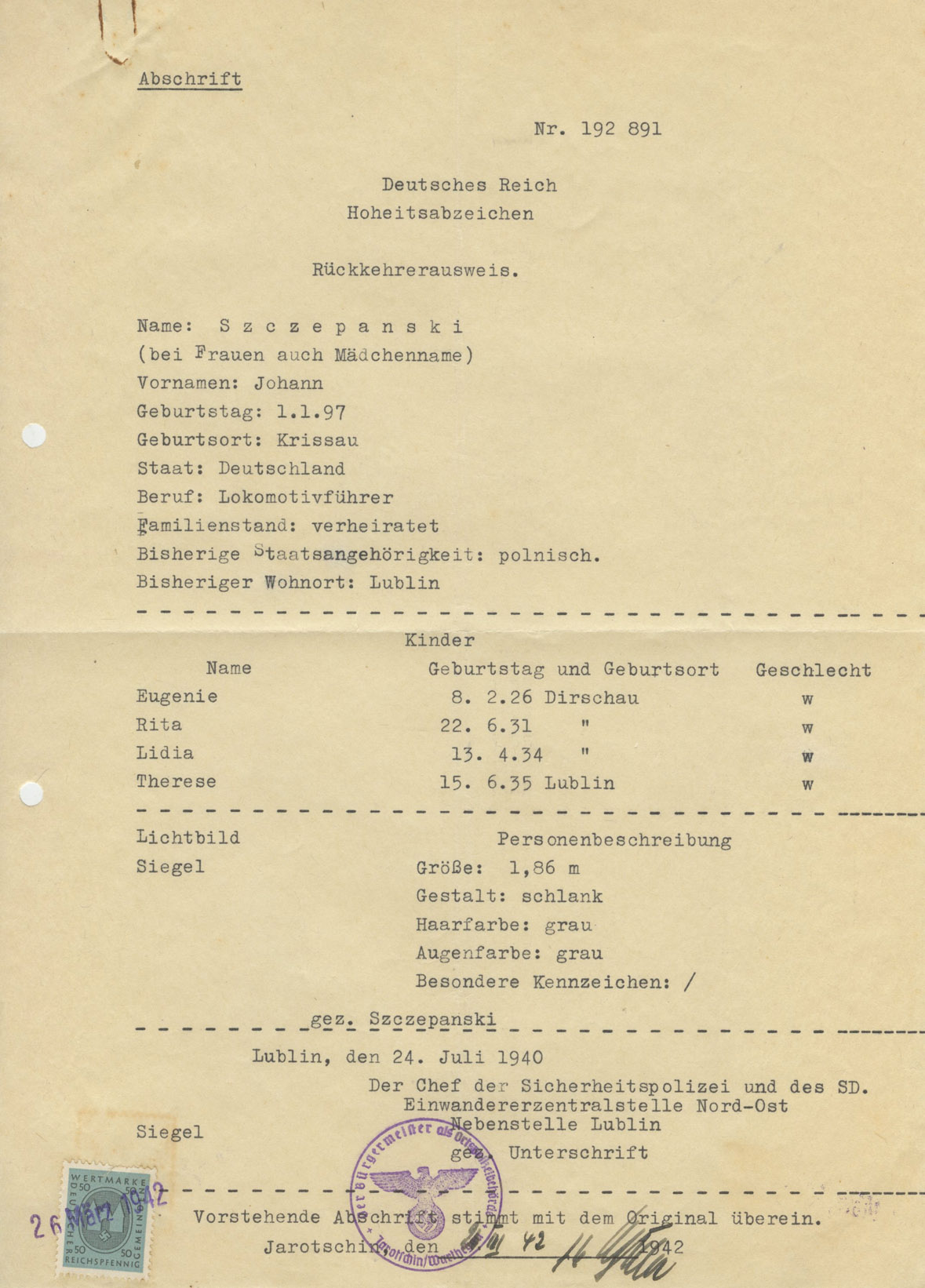

[Below: This is a 'Heiratsurkunde' (Marriage Certificate) from a 'Reichsbahnangestellte' (Reichsbahn employee) from Litzmannstadt (Poland, Litzmannstadt was the German name for Lódz. When Germany occupied the city in September 1939, the city had a population of 672,000 people. Over 230,000 of them were Jewish, or 31.1%). The last name of the male here is Skoczdopole, which is Polish, but Samborski is Polish/Jewish. Of course Litzmannstadt was famous for its Jewish ghetto. The man's mother's last name was Schneider, which is also a predominately Jewish name. The woman's mother's maiden name is Rada, which is a name of Yiddish origin. So, all in all I'd say it is safe to say we have two Jews here getting married. It's interesting that the evil Germans would go through this trouble for some people they were about to kill...]
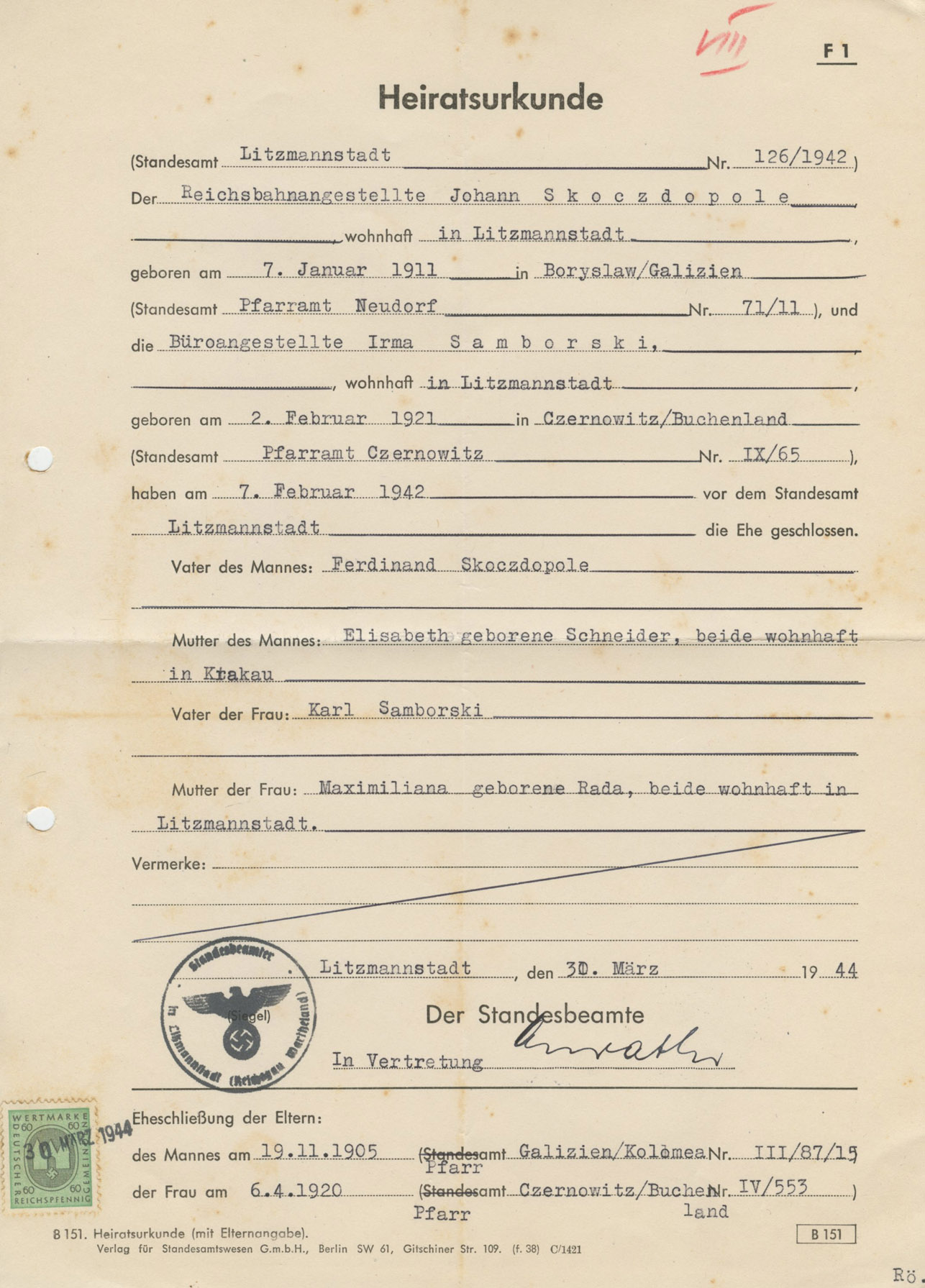

[Below: Two more 'Geburtsurkunde' (Birth Certificate) documents. Whoever filled this form out used the old German script which is very hard to read, especially for us English speakers. I wonder why this certificate took two stamps and the other only used one?]
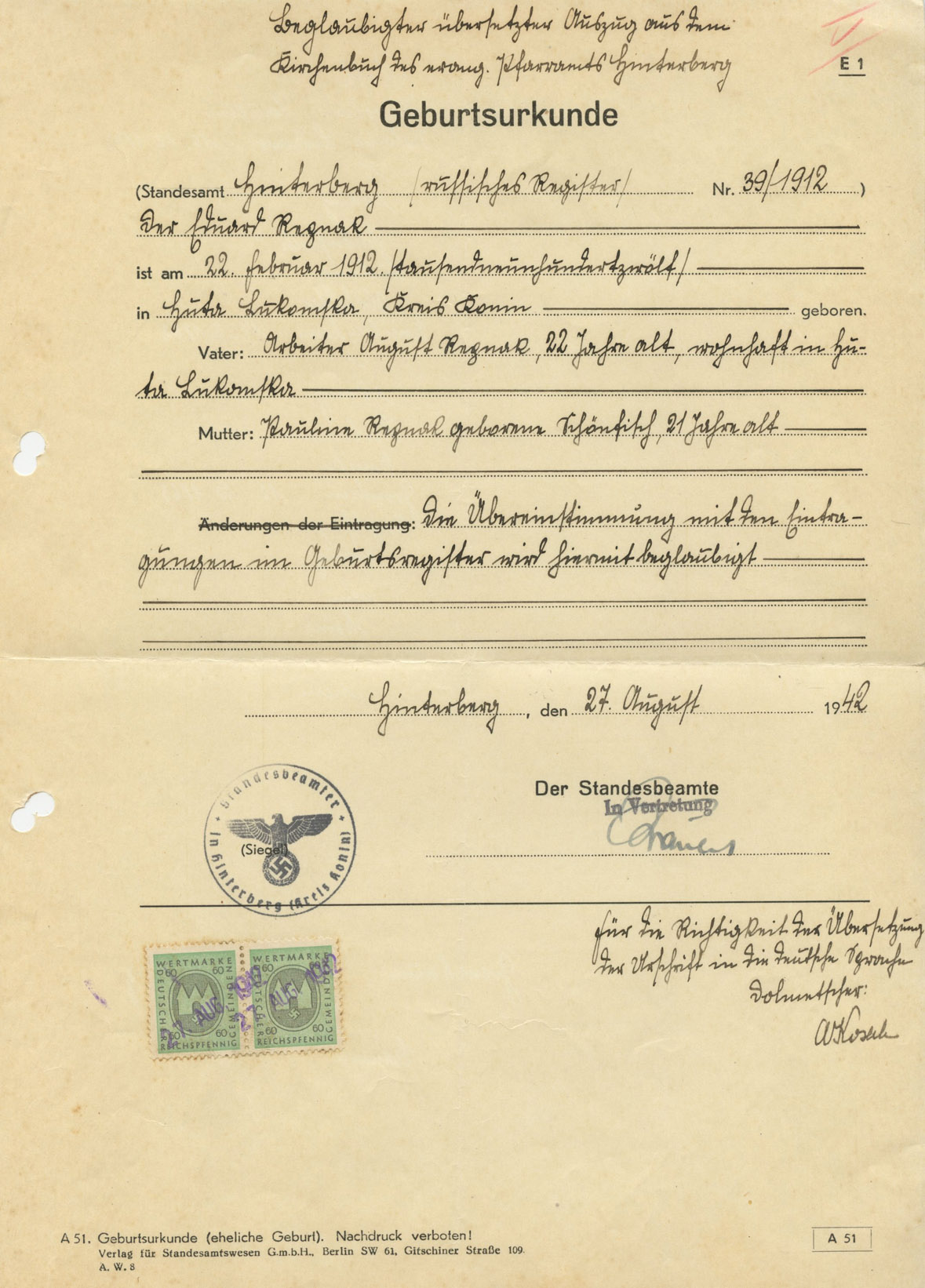
[Below: This 'Geburtsurkunde' (Birth Certificate) states that the father was a 'Kolonist' but it doesn't say where. He is from a place called Gross Tabor, but there are places called Tabor all over the world. The man was born in Gross Friedrichsburg, which could be Ghana. Tabor could be in Morocco even. Perhaps they were Christian evangelists in Africa?]


[Below: This is an 'NS.-Volkswohlfahrt' (NS Peoples Welfare) donation receipt from Vienna, 1942. This is from the Nationalsozialistische Frauenschaft, or NSF (National Socialist Women's League). I like the little 1 RM stamp with the NSF rune symbol and sunwheel swastikas. The back is blank.]
[Below: 'Beitragsmarke' (Contribution stamp). Close-up.]


[Below: Here is a rare booklet of 1935-36 donation receipts with only one missing.]
[Below: Random page within.]
[Below: Last page.]
[Below: Reverse of booklet.]

[Below: This is made of very flimsy, thin paper. Sometimes you gotta wonder how things like this survived. How it didn't burn with the cities.
Was it tucked away in some closet for decades and decades, forgotten until the death of its owner, perhaps found by a relative sorting through their estate? Anyway, this is from 1941, and says:
'6. Deutsch Reichslotterie
Amtlicher Gewinnplan'
(6th German Reich Lottery
Official Winning Schedule). Front.]
[Below: Close-up of eagle. What happened to its beak? You don't see this very often on preprinted stuff. The saying 'That's a rare bird' is very relevant!]

[Below: Reverse.]
[Below: Here's a different example, from 1937 and for 'Prussia-South Germany'. Front.]
[Below: Here's a different example. Front.]

[Below: Large NSDAP lottery paper from late 1940. Front. Click to enlarge.]
[Below: Large NSDAP lottery paper from late 1940. Reverse. Click to enlarge.]
[Below: Lottery ticket from the above. Front. Click to enlarge.]
[Below: Lottery ticket from the above. Reverse. Click to enlarge.]

[Below: Now here is something cool, rare and interesting. It was sent December 21, 1942 from Berlin-Charlottenburg. Apparently someone ordered a lottery ticket and this is what they got. It is incredibly rare to see this with all its contents! Front. Click to enlarge all.]
[Below: Large four page paper. Front.]
[Below: Page two.]
[Below: Page three.]
[Below: Page four.]
[Below: Insert #1.]
[Below: Insert #2.]
[Below: Insert #3.]
[Below: Insert #3 reverse.]
[Below: Return envelope - front.]
[Below: Return envelope - reverse.]
[Below: The lottery ticket.]
[Below: The lottery ticket - reverse. Check out the watermark.]
[Below: Additional lottery tickets - these have the same watermarked blank background as above. This lottery drawing was on June 16th and 17th, 1939. Oddly, these first three, all from 1939, are missing the eagle and swastika.]
[Below: Additional lottery tickets - these have the same watermarked blank background as above. This lottery drawing was on July 11th and 12th, 1939.]
[Below: Additional lottery tickets - these have the same watermarked blank background as above. This lottery drawing was on August 4th and 5th, 1939.]
[Below: Additional lottery tickets - these have the same watermarked blank background as above. This lottery drawing was on January 11th and 12th, 1943.]
[Below: Additional lottery tickets - these have the same watermarked blank background as above. This lottery drawing was on April 14th and 15th, 1944.]
[Below: Additional lottery tickets - these have the same watermarked blank background as above. This lottery drawing was on July 11th and 12th, 1944.]
[Below: Additional lottery tickets - these have the same watermarked blank background as above. This lottery drawing was on February through March 5, 1945.]
[Below: Beautiful German Third Reich lottery ticket held by the NSDAP, circa 1933. These NSDAP lottery tickets are huge!]
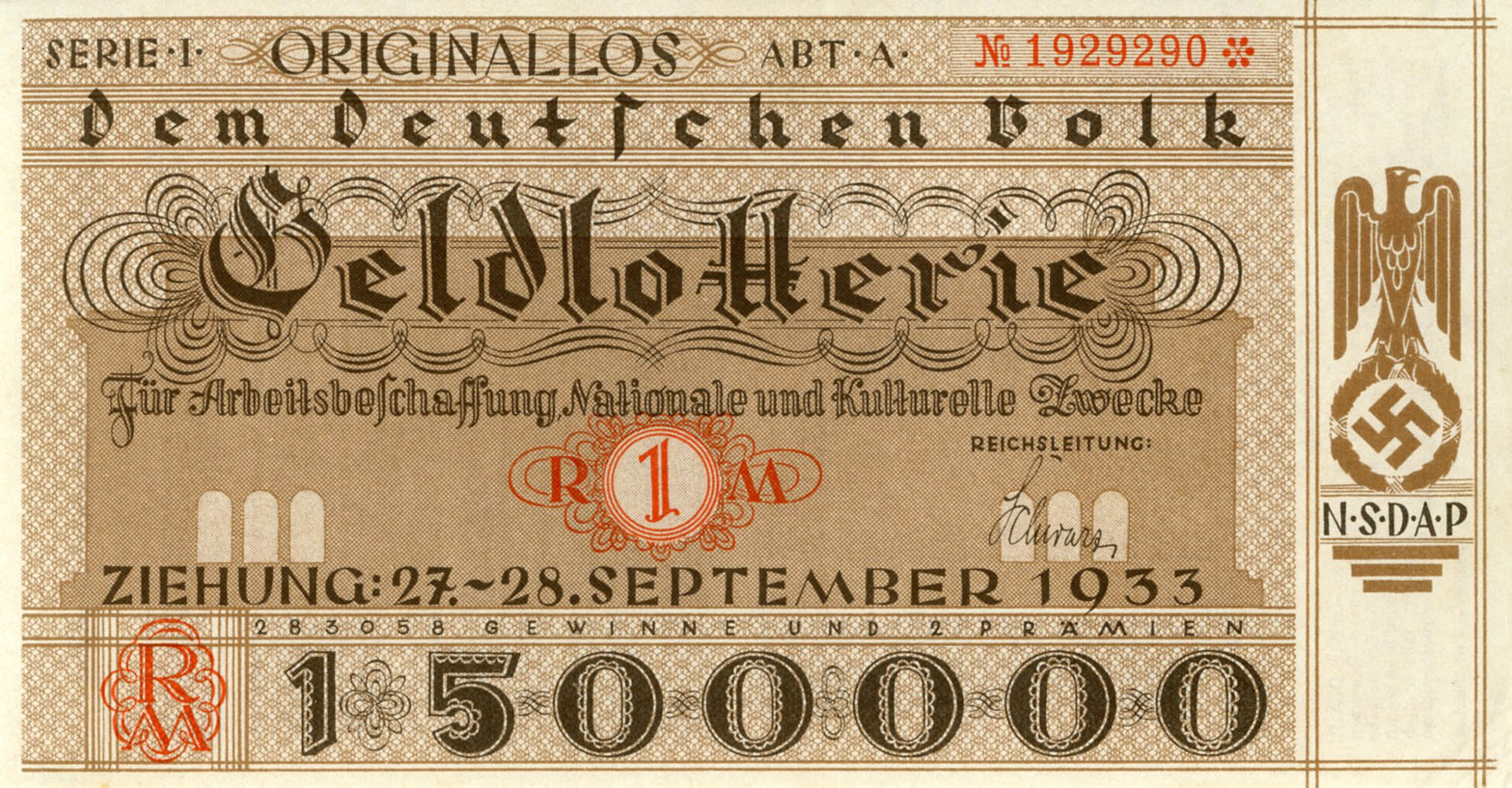
[Below: Beautiful German Third Reich lottery ticket held by the NSDAP, circa 1934.]
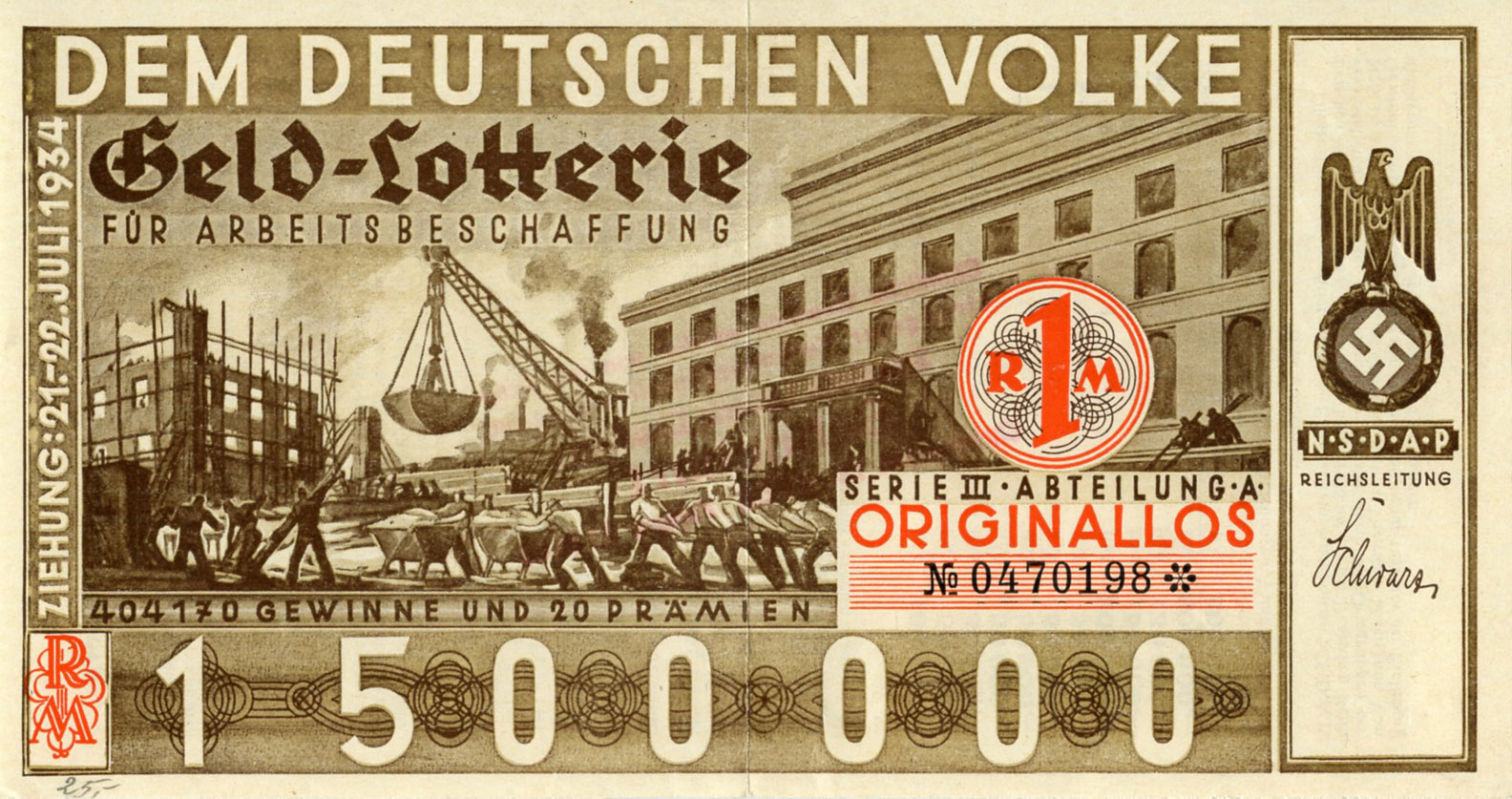
[Below: Beautiful German Third Reich lottery ticket held by the NSDAP, circa 1935.]
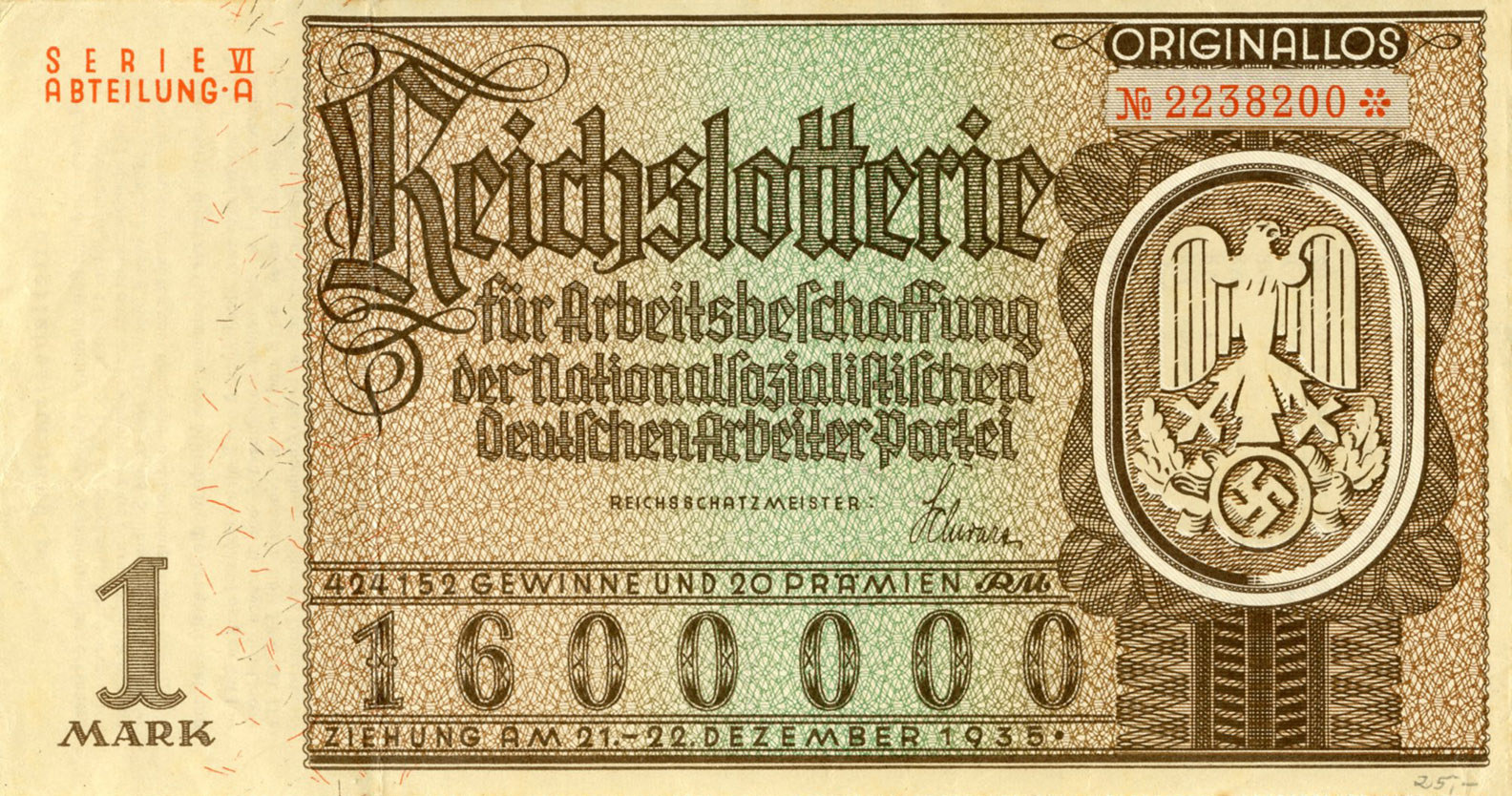
[Below: Beautiful German Third Reich lottery ticket held by the Luftshutz (Air Defense), circa 1934. No eagle, but it does have a guy shooting at birds.]
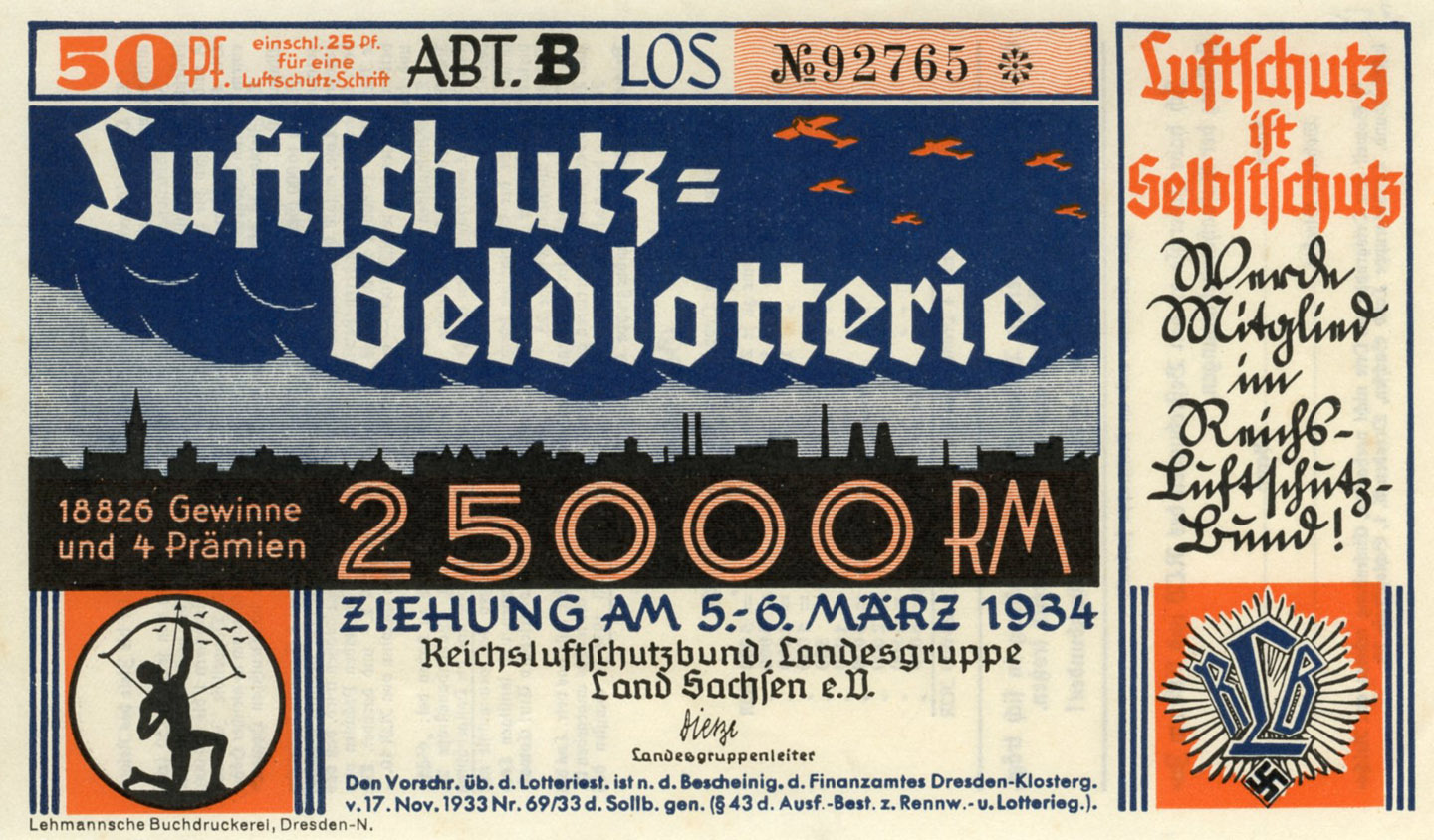
[Below: Third Reich lottery ticket circa 1935.]
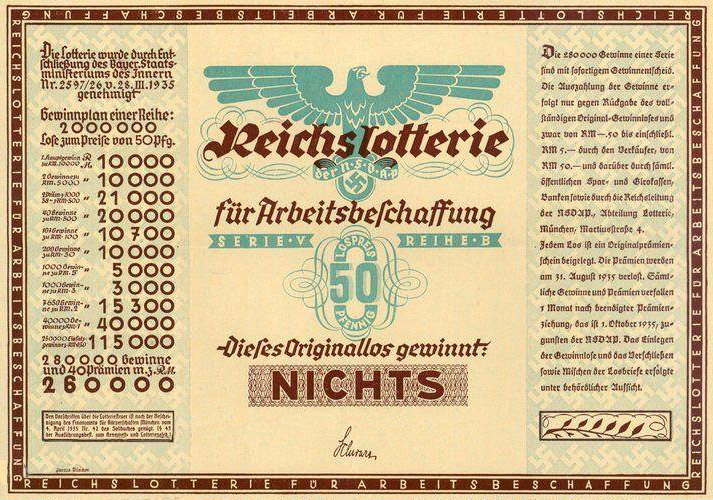
[Below: Stamp on the back of lottery ticket above.]
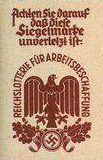
[Below: Third Reich lottery ticket circa 1939.]

[Below: Stamp on the back of lottery ticket above.]
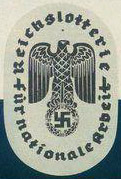
[Below: Double postcard from the 1934-35 Reichwinterhilfe=Lotterie (Reich Winter Aid Lottery). Click to enlarge.]
[Below: Postcard reverse. Click to enlarge.]
[Below: Close-up of stamp.]
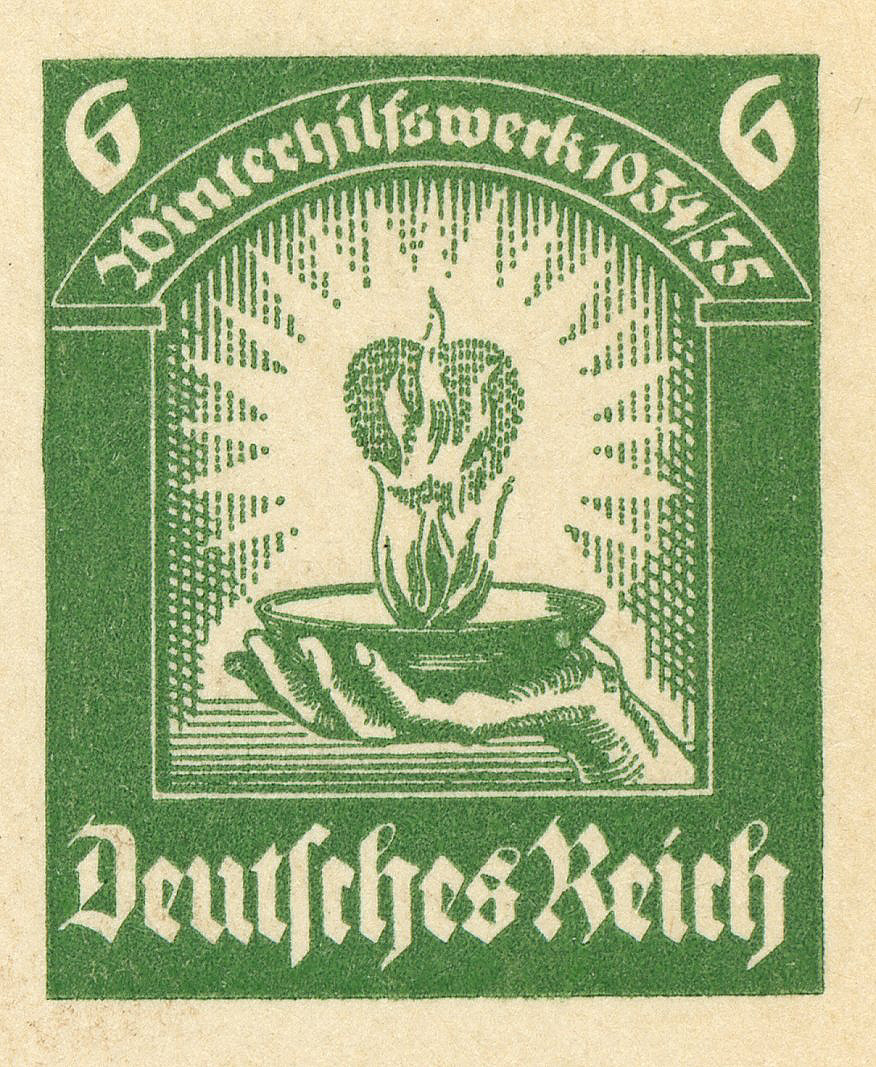
[Below: Postcard made from a cutout from a lottery number sheet. It is made of thin paper.]
[Below: Reverse.]
[Below: Wow, this is so cool. This is a WHW (Winterhilfswerk des Deutschen Volkes, or Winter Relief of the German People) lottery key from March 6, 1938. Front/back.
On the left it says:
'Gewinne Nur Gegen Rückgabe des Schlüssels'
(Winnings only on return of the key)
And on the right it says:
'Ein Volk Hilft Sich Selbst
N.S.V. Gau Berlin
'
(A people helps themselves
N.S.V. Gau Berlin)
Click to enlarge.]
[Below: This was taken from the Berliner Illustrirte Zeitung, October 10, 1940 - number 41.]

[Below: Here is a Third Reich lottery ticket from Bohemia and Moravia (what was once Czechoslovakia). Sorry no eagle, but still neat.]
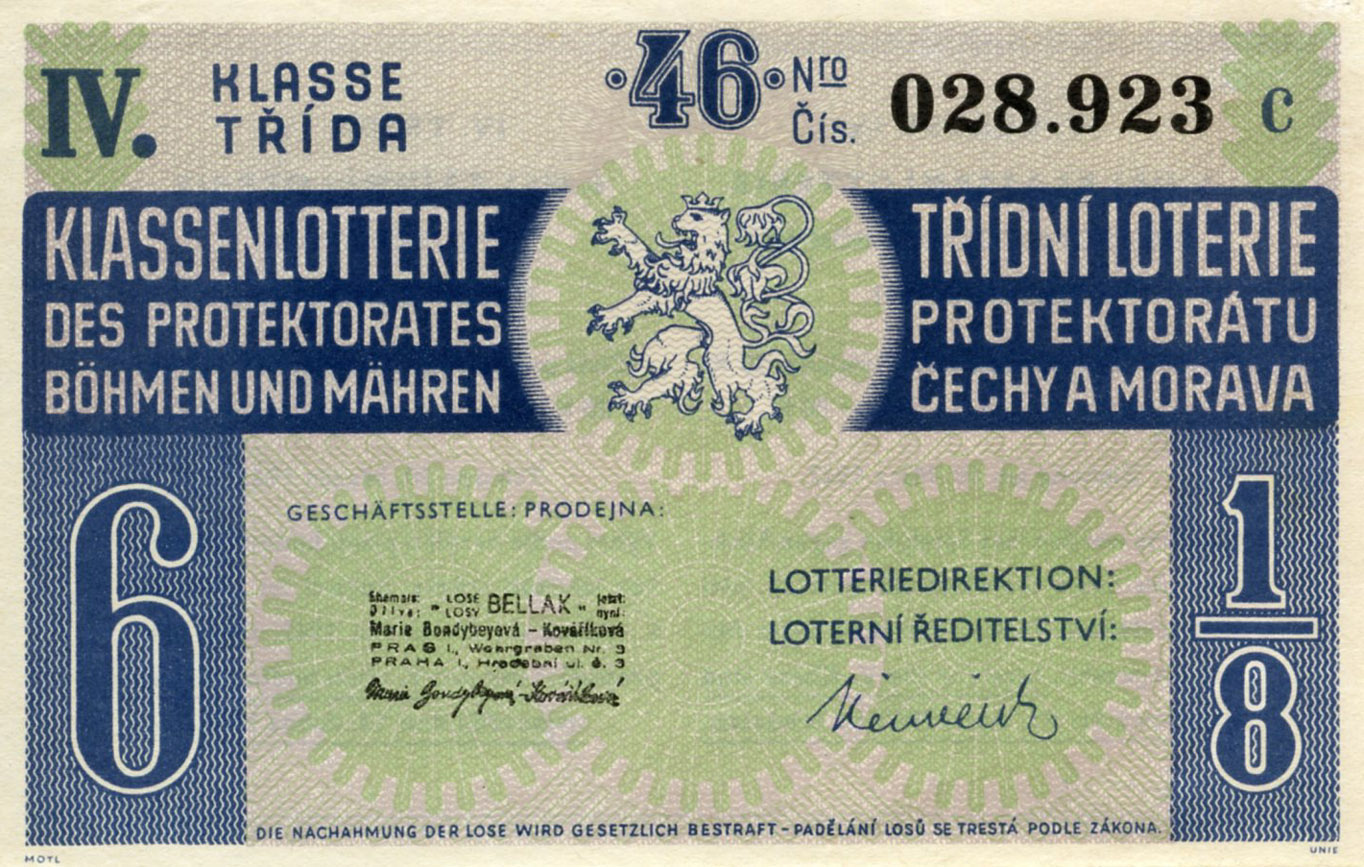
[Below: This is the Belgian version of the WHW (Winter Relief of the German People). This lottery ticket is from 1941. Front.]
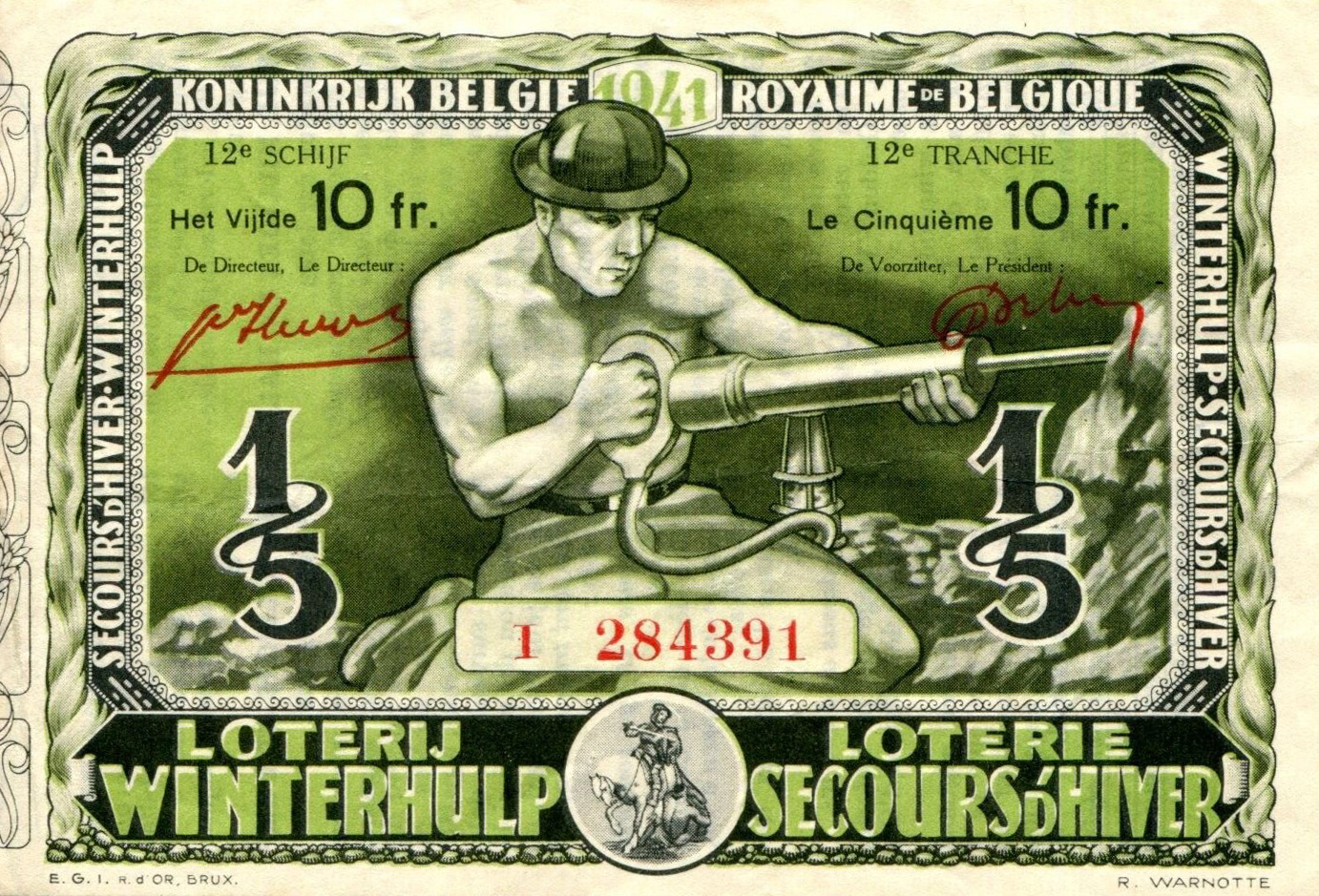
[Below: Back.]
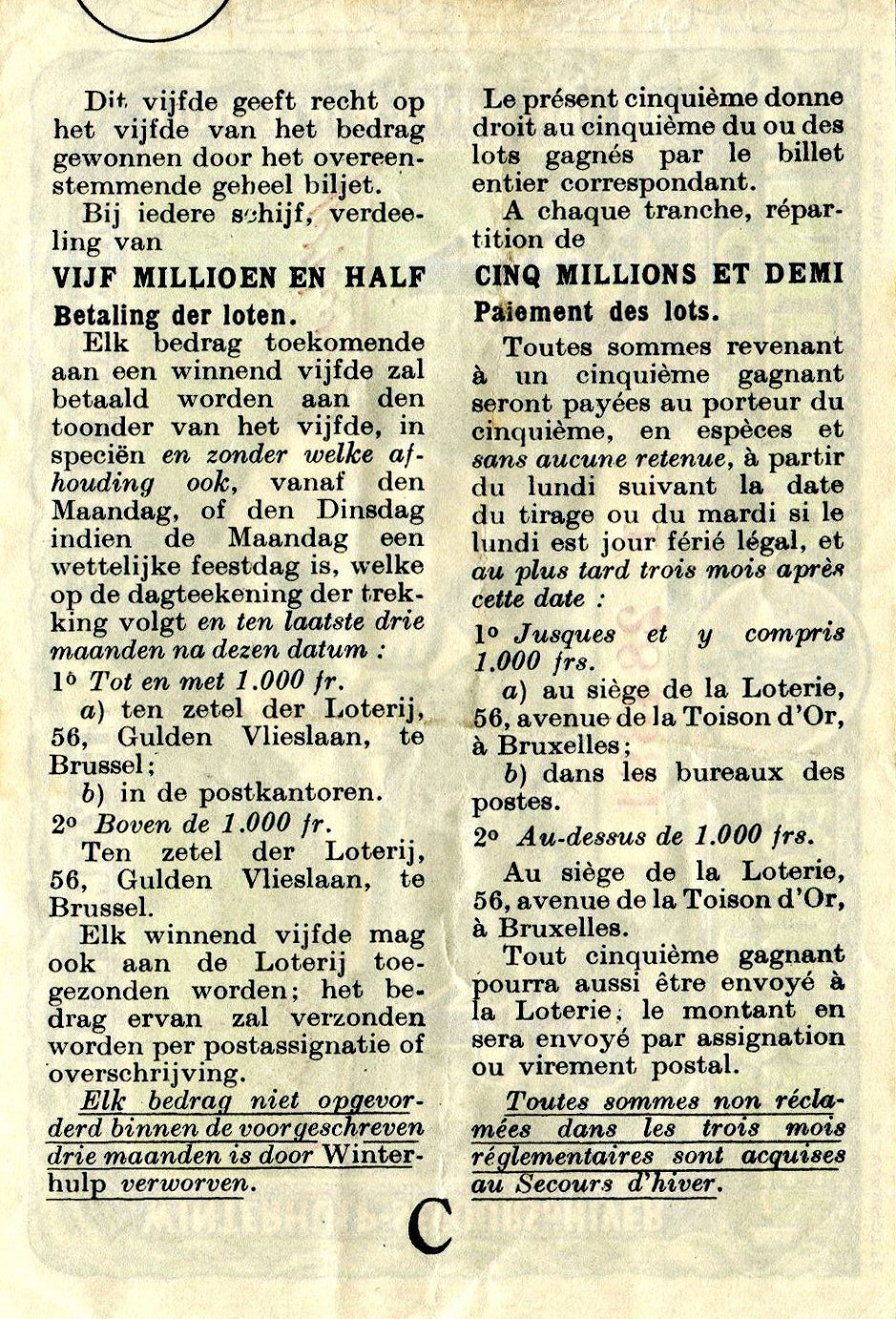
[Below: This is a 1942 Vichy French lottery ticket. I presume this is a lottery for French colonies. It says:
'Associations des Anciens Coloniaux' (Association of Former Colonies)
Further down it says:
'Confederation Nationale de la France D'outre-mer'
(National Confederation of France Overseas)
Front.]

[Below: Back of ticket.]
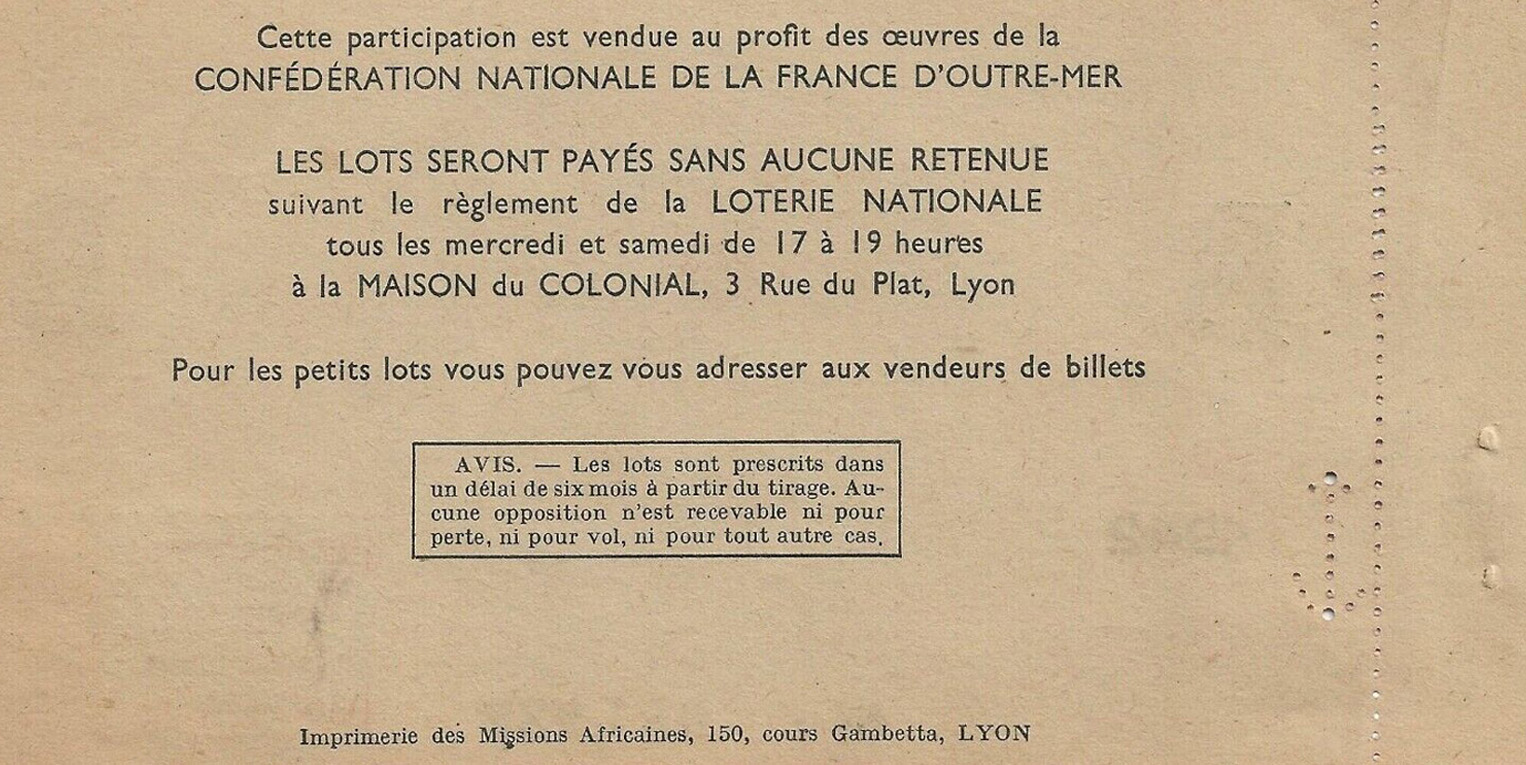
[Below: 1943 Vichy France lottery ticket (the back is blank). Click to enlarge.]
[Below: Close-up of stamp. Click to enlarge.]
[Above: This is a lottery ticket from the Japanese liberated Philippines. The drawing to be held on December 21, 1941. Front.]

[Above: Back. I wonder who won?]
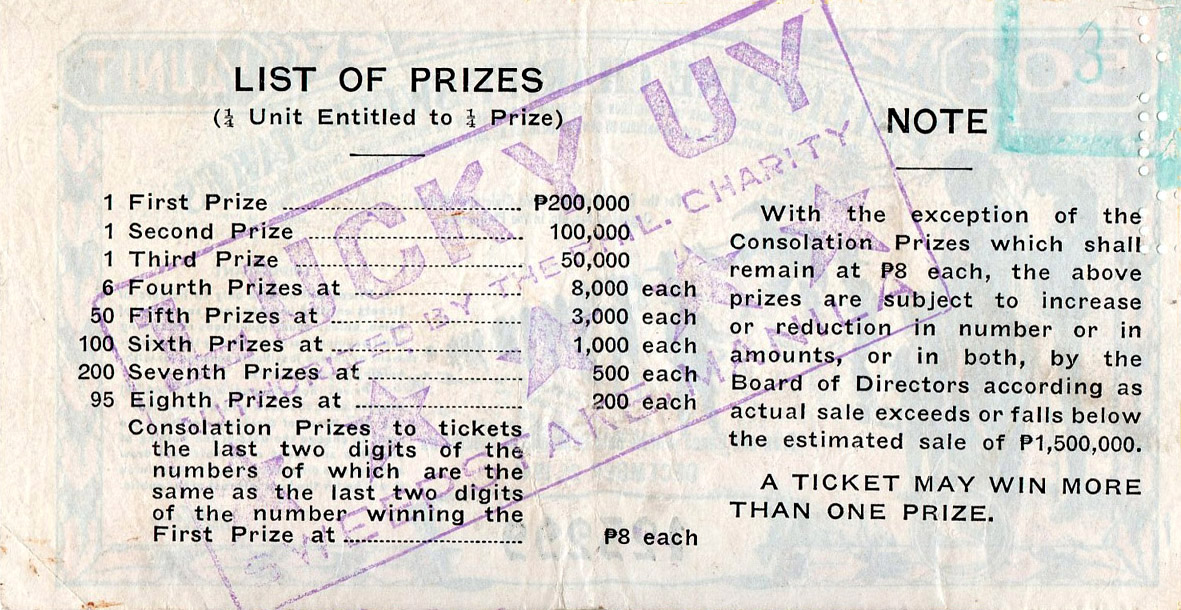

[Below: I found this stuck in an old German book. I'm not exactly sure how you would have used this. I guess as some sort of coupon to a cultural event. It says:
'Das freilicht=und Volksschauspiel ist eine der
wertvollsten und wolkstümlichsten Ausdrucks=
formen deutschen Kulturschaffens. Seine Entwick=
lung im Sinne echter und bester Volkskunst durch
Einsatz und Miterbeit zu fördern, ist ehrenvolle
Aufgabe des ganzen Volkes.'
(The open-air and folk theater is one of the
most valuable and most expressive
forms of expression of German cultural creativity. To promote its development
in the sense of genuine and best folk art through
commitment and cooperation is an honorable task
of the whole people.)
